AudioKeyREVIEWS !

HIGH FIDELITY PERSONAL AUDIO & STEREO MAGAZINE
LYRIC AUDIO
Ti 100 MkII
SET INTEGRATED AMPLIFIER






KRATOS AUDIO MONOBLOCK AMPS
BDI AUDIO/VIDEO AUDIO/VIDEO CONSOLE
DAN CLARK CORINA HEADPHONES
WIREWORLD
ETHERNET CABLES
SHAKTI STONE AIR & ON-LINE AIR
EMI STABILIZERS
AND MORE…
JULY 2023 I11
The Last Platform You’ll Ever Need



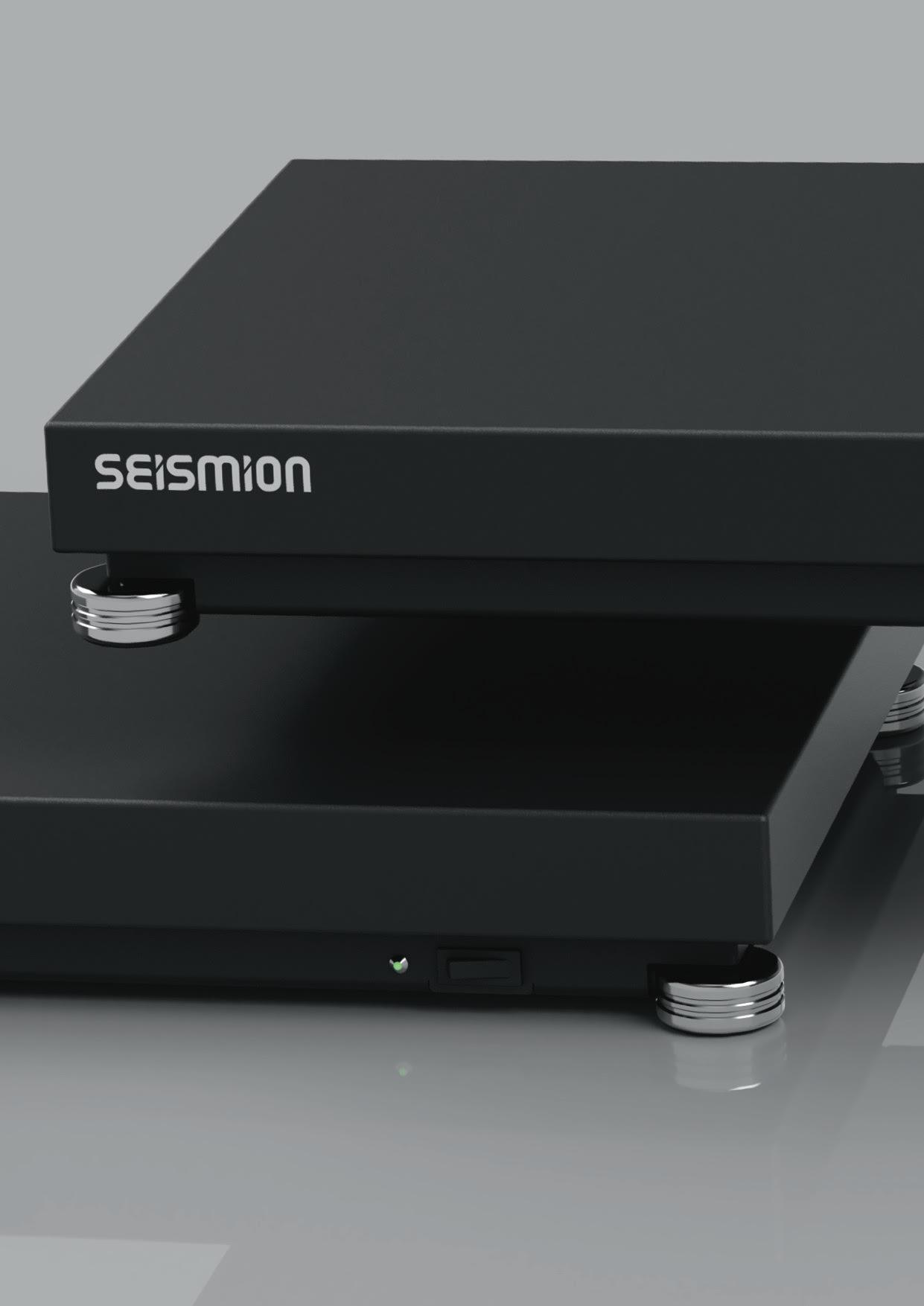
E LECTRIFIED S TABILIZATION P LATFORM
Music is art, art is music.



US & CANADA



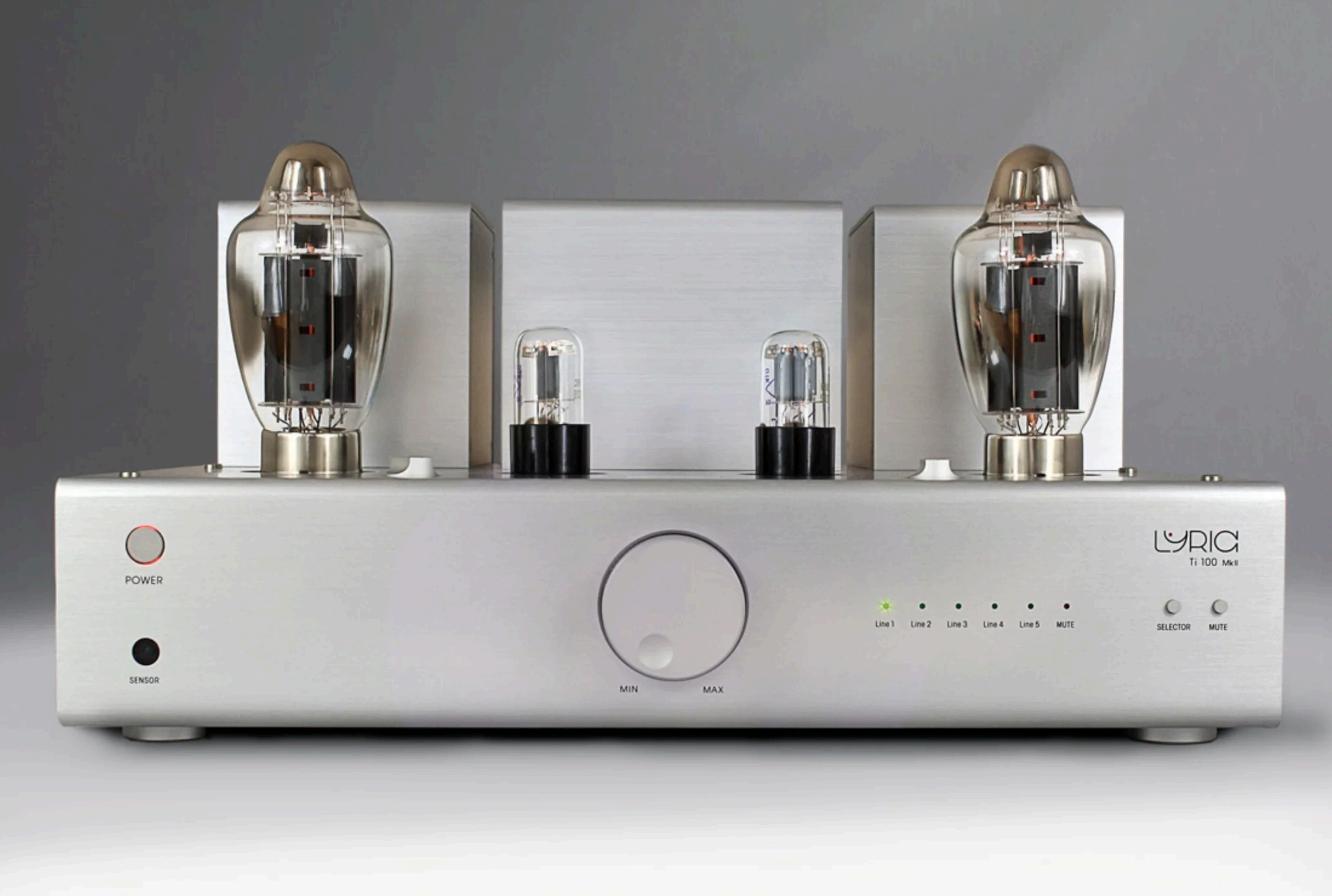
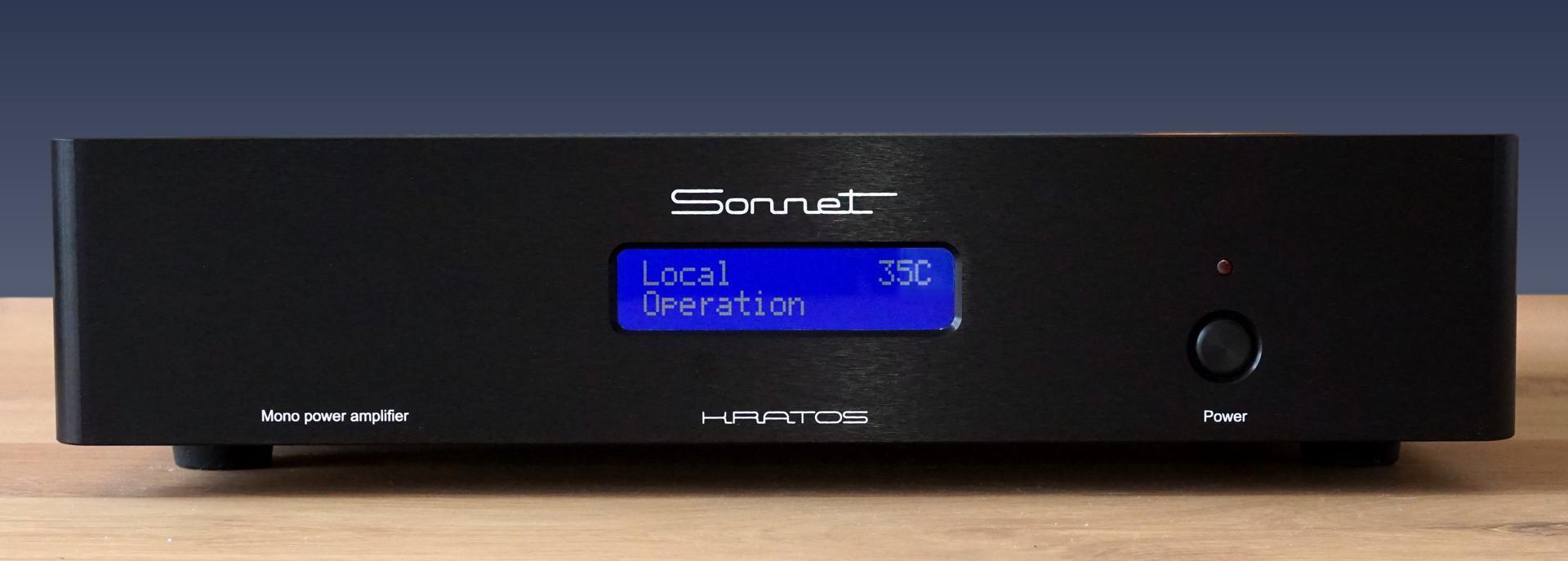
INSIDE THIS ISSUE… ART MUSICIANS 94 84 122 46

audiokeyreviews.com Copyright AudioKeyReviews 2023 15 32 46 58 68 84 96 110 122 HI-FI REVIEWS EDITOR'S LETTER DAN CLARK CORINA DR. IRINA KUZMINSKY - MUSICAL MUSINGS RAIN JORDAN - JOAN OF AUDIO & MUSIC INTERVIEW - EL NICHE GOZADOR LYRIC TI 100 MkII INTEGRATED SONNET KRATOS MONOBLOCK AMPS WIREWORLD TWINAX ETHERNET BDI ELEMENTS AUDIO/VIDEO CONSOLE INTERVIEWS MUSIC TABLE OF CONTENTS


MUSIC REVIEWS
136 146 156 164 170
172
SHAKTI STONE AIR & ON-LINE AIR
AUDIO MIRROR TUBADOUR DAC
RECOMMENDED COMPONENTS
MAGICAL SYNERGIES COMING NEXT REVIEWS ON THE WEB
Front Inside Cover: Andre Kertesz
Back Inside Cover: Henri Cartier Bresson
The Other Art. It is my belief that the artist and the musician are not only creatives, but they access heart and soul and experience, perhaps, in the selfsame ways. My own love for art and music are inseparable. And so art, music, and those things which facilitate the music shall share theses pages.
LETTERS TO THE EDITOR - SEND HERE
VIDEO REVIEWS

audiokeyreviews.com Copyright AudioKeyReviews 2023
AUDIO




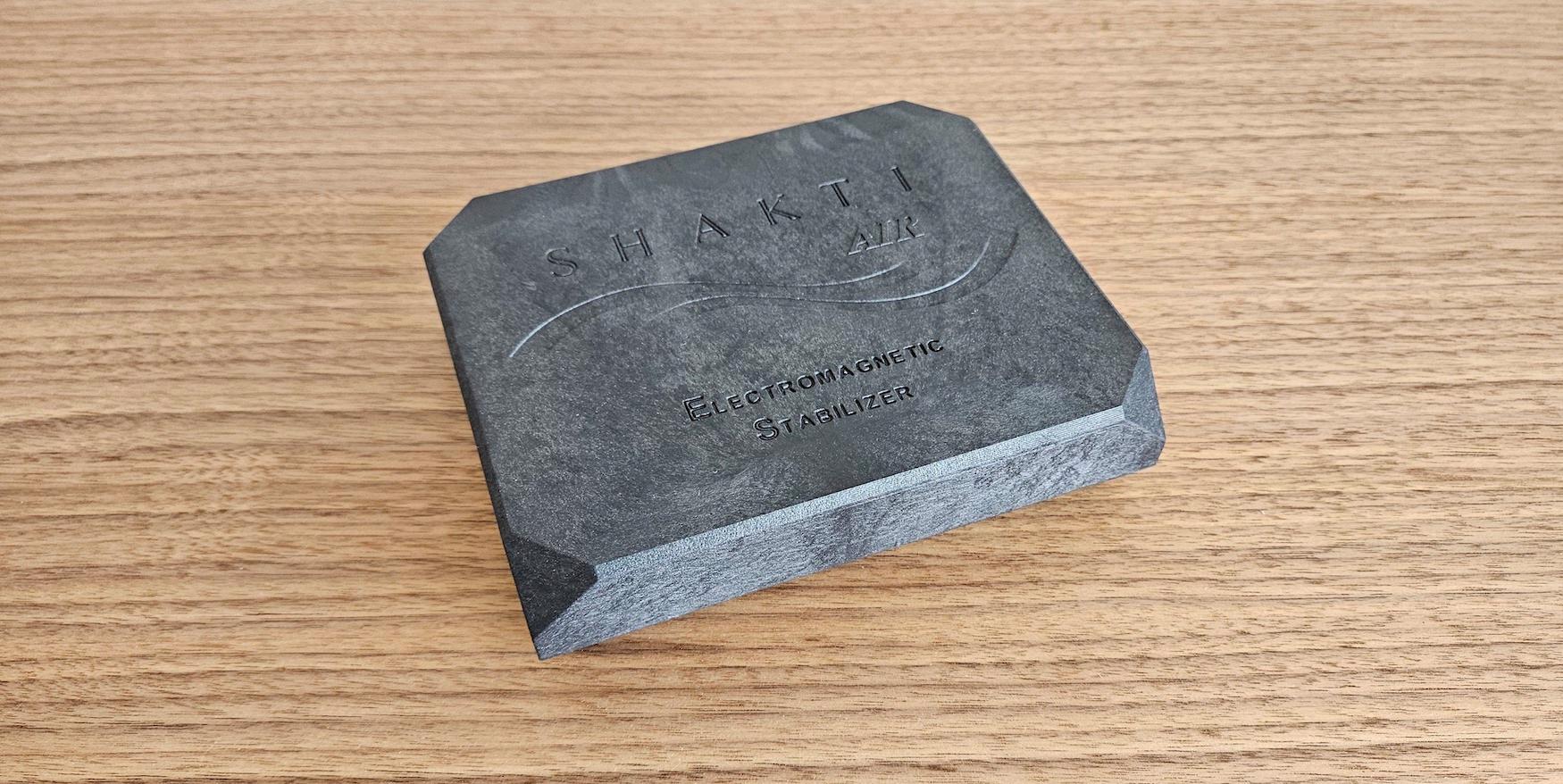

INSIDE THIS ISSUE… 32 136 68 110 58


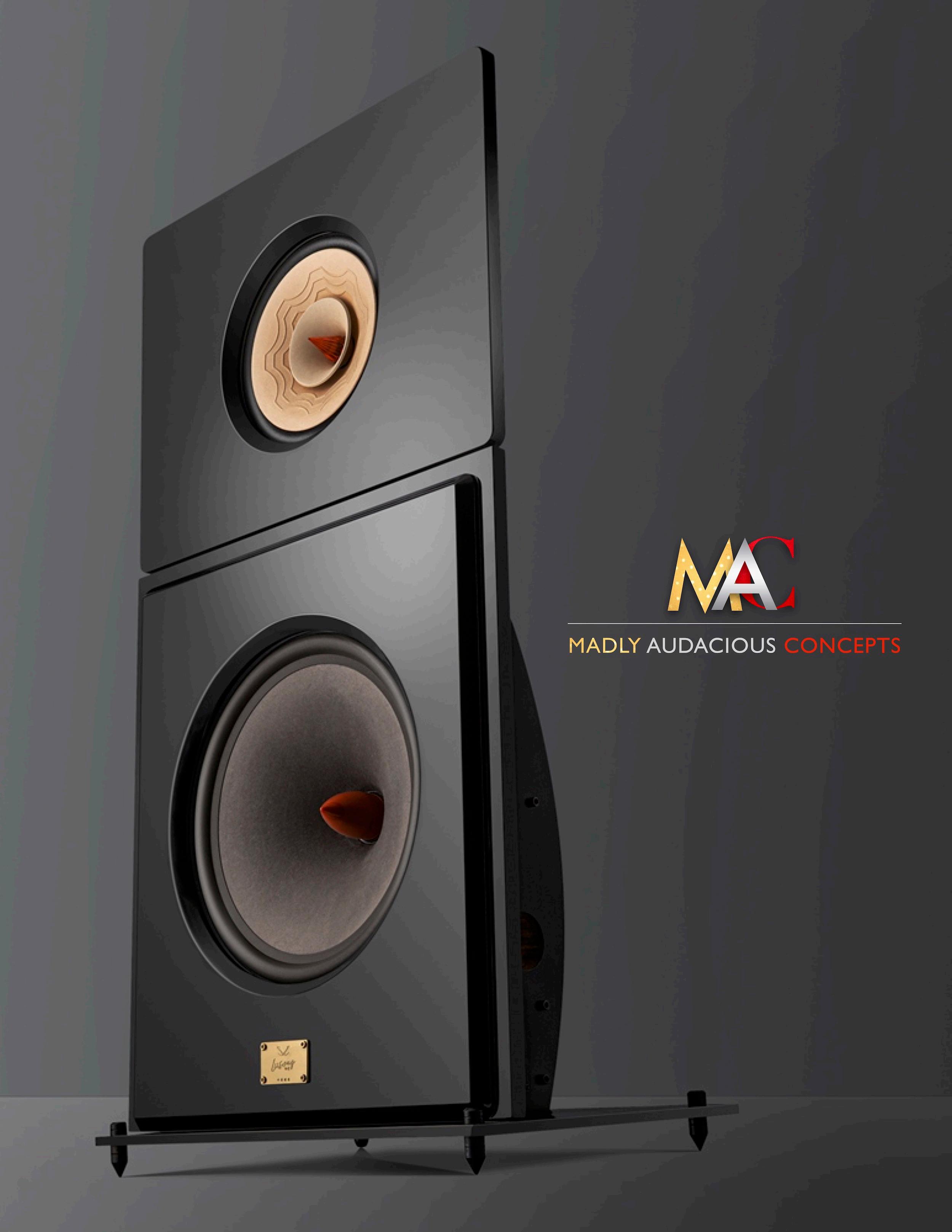
It’s four years now since AudioKeyReviews or AKRMedia hung out its shingle for business, began its online presence, and subsequently published its first US magazine—AudioKeyREVIEWS!— which is nearing its third year of publication. Yay!

In putting together the various media—website and magazines—I have utilized my skills as a writer (fiction, nonfiction, technical), an editor, a “wanna-be designer,”a longtime audiophile/music lover, and a businessman. I promised myself when I left IT that I would only do something that I absolutely loved and that utilized the various skills nurtured over many decades.
The past several years have given me an opportunity to gain a great deal of insight into the audio world and to meet some great people and some rather interesting people. The sordid details and the naming of names, however, will be left for the book. The good people for whom I am so grateful are the utmost professionals, of exceptional character and high integrity, and just good, all-around salt-of-the-earth folks.
I have also been able to put together three reference systems capable of analyzing personal audio components as well as two-channel components via systems that easily stand toe-to-toe with far more expensive systems. And this allows me to critically review components from a position of, well, technical strength. Each and every component in the various reference systems is a top award winner, Best of the Year product, or even a Breakthrough product.
Now in addition to reviewing all manner of components from personal audio to two-channel audio, I begin the process of bettering my reference systems, but not via new components, as that would upset the synergy of the carefully curated systems. Now I improve my systems by using tweaks. And in this edition of AudioKeyREVIEWS! Magazine you’ll be exposed to the first few tweaks (the ones that made the cut), with many more to come.
Sincerely,
Editor-in-Chief


audiokeyreviewsCA.com
K.E. Heartsong
EDITOR’s CHAIR
THE CREW
Publisher/Editor-in-Chief
K. E. Heartsong
Managing Editor

Dr. Irina Kuzminsky
Senior Editor(s)
Andre Marc
Oliver Masciarotte Columnists
Dr. Irina Kuzminsky
Rain Jordan
Music Reviewers (Video/Written)
Dr. Irina Kuzminsky
Photographer
K. E. Heartsong
Graphic Design
Wabi Sabi Design Group

MASTHEAD audiokeyreviews.com

 HermanMiller
HermanMiller


Welcome



audiokeyreviews.com

 Wayne Thiebaud-Green River Lands
Wayne Thiebaud-Green River Lands

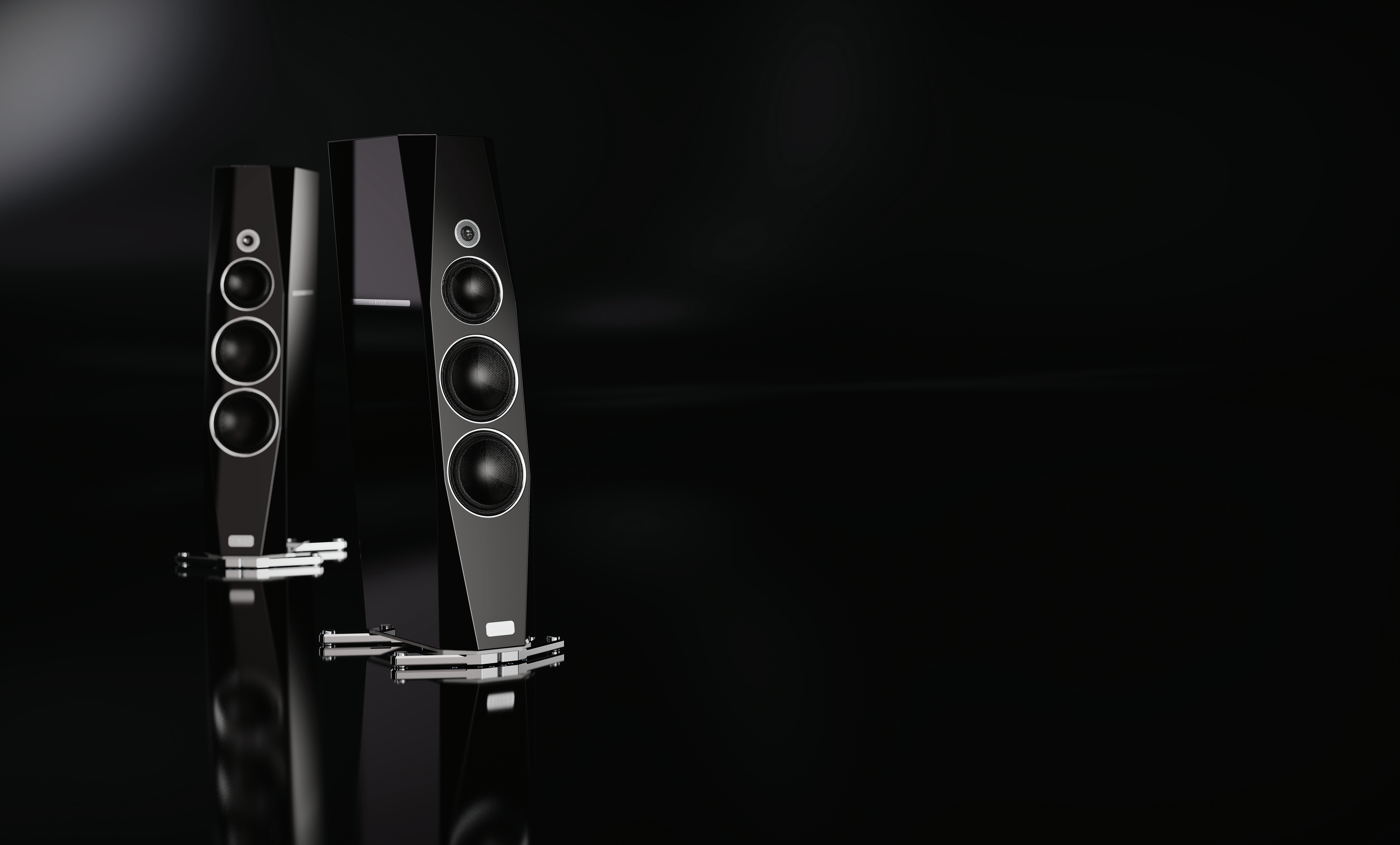
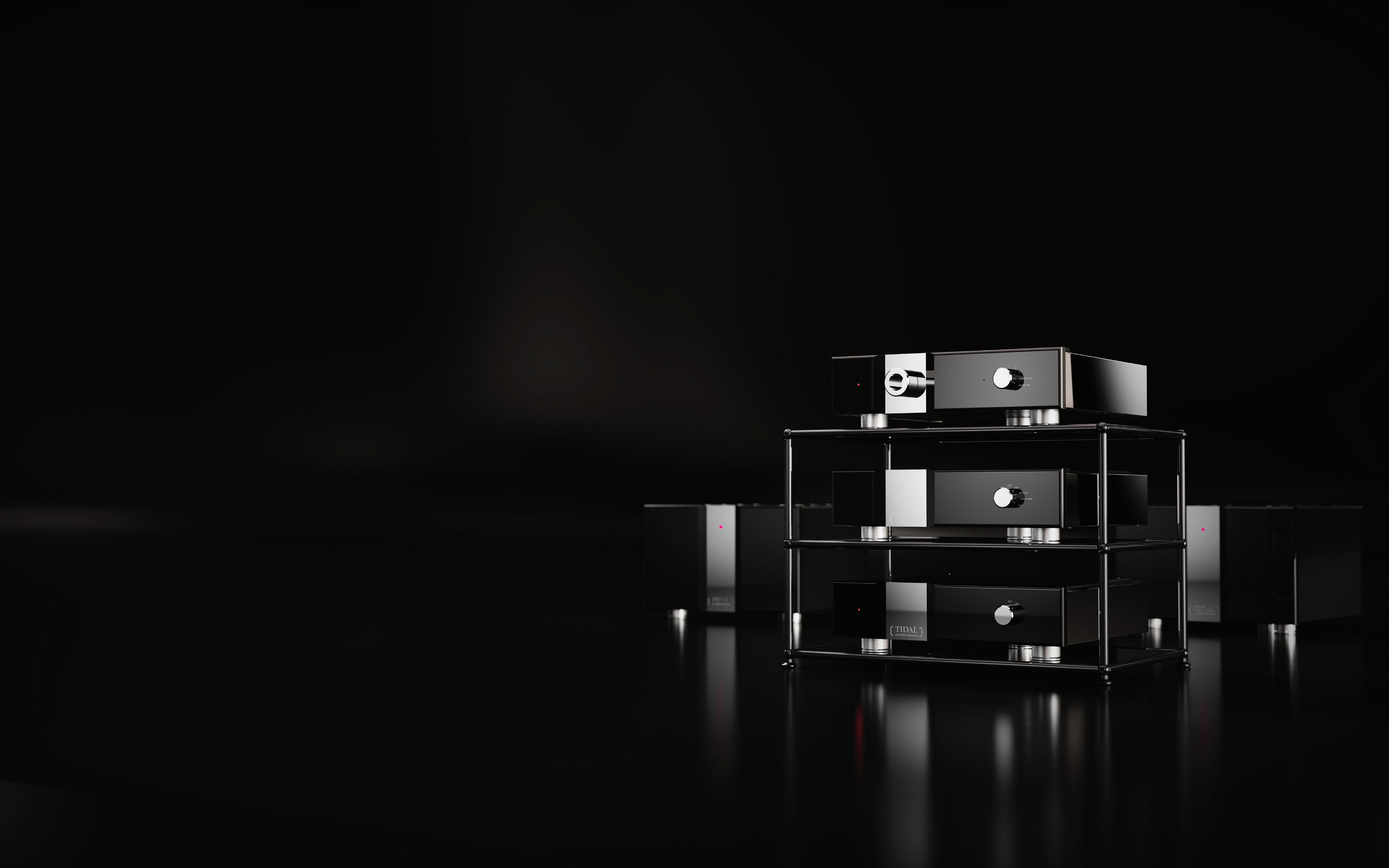


 Wayne Thiebaud - Winding River
Wayne Thiebaud - Winding River
 Camille Claudel - Self Portrait 1884
Camille Claudel - Self Portrait 1884


A PUBLIC SERVICE BY AUDIOKEYREVIEWS www.metmuseum.org
One of the Best Products of the Year and One of the Most Affordable!


DAN CLARK CORINA
 By K.E. Heartsong
By K.E. Heartsong

DAN CLARK CORINA

It is alway great fun for me to travel to the world of electrostatic components— headphones, amplifiers, speakers—via my ever evolving Tardis—now a Mid Century Modern, beautifully upholstered chair (& a half). Indeed, electrostatics provide musical insight into another world, entirely. It is a world removed from dynamic headphones and planar magnetic headphones and encompasses a vast network of lands—STAX, VIVA, HeadAmp, Trilogy, Dan Clark, Warwick Acoustics, Martin Logan, Quad, etc. Perhaps this is why after so many decades electrostatics are alive, well and thriving! It’s over two and a half years now since I made my first trip to this planet via my then Yellow-Chair-Tardis, a time and space machine of sorts, when coupled with electrostatic ‘engines’. And on that first trip I discovered that it was possible to move beyond musical simulacrum—a very good high fidelity rendering of one’s music— to an experience that could almost literally place one in the relevant performance venue. How is that possible?

There is something about electrostatics
that masterfully recreates the ambiance, the air, meticulous soundstaging—depth, breadth, layers, position, and space between performers —and then the various microdynamics—small tell-tale signs of a given venue—that allow for one’s easy suspension of disbelief. And, as a direct result, you are there with the performer(s), comfortably ensconced in venue —the nightclub, the concert hall, the arena, etc.—and upon your own purposed Tardis.
“Humbug!”
You say.
Then it is experience that you’ll be needing to have for your own
suggest the travel arrangements via the various electrostatic gear, as I imagine would Justin Wilson of HeadAmp (a truly good guy). You, however, will have to provide your most comfortable chair, as Tardis—time and space machine—to make this journey to the Electrostatic World.

I travel to the Electrostatic World this time with a well known and superb electrostatic engine/amplifier—the HeadAmp Blue Hawaii

audiokeyreviews.com
 Edgar Degas - Ballerina
Edgar Degas - Ballerina

latest electrostatic headphone, the CORINA, the subject of this review. Other components in the review—Mojo Audio Mystique SE DAC, Silent Angel Bonn N8 Pro network switch, Audience FrontRow, and AntiCable wires and cables, and the TORUS RM20 power conditioner.

REFRAIN: Unlike most reviews, this review will be non-sequential, as it will start with how the headphones actually sound and not the process of physically “undressing” them and/or laying out their various parts, specifications, etc. Think of this review then, as a non-linear movie—Memento, Kill Bill, Pulp Fiction, Transcendence, In the Shadow of the Moon, etc—that, likewise, starts at the end and winds its way to the beginning.
THE SOUND
If ever a component could itself be called ‘musical,’ then the Dan Clark CORINA is that

CD, or a stream. There is simply no other way around it. If you are, indeed, a music lover first, then the CORINA will lure you in, immerse you in the music in a manner so few components of any type can do.
As mentioned above, the earmarks of the venue are beautifully brought together via the CORINA like few headphones have any right or ability to do. The palpability of a given soundstage, the performer(s) therein, and the various ambient cues are simply outstanding. I am forced, constantly, to stop and appreciate what I’ve just heard as it relates to a given performance. This is rather inefficient for a reviewer but tremendously informative for a lover of music.
Tone, timbre, and the texture of instruments are so incredibly natural, so lifelike as to render the performance of other headphones mere facsimiles of the selfsame performance. Further, the CORINA is, perhaps,


audiokeyreviews.com
hidden details, it gives nothing away to the STAX SR-009S ($4,500) electrostatic headphone. And the CORINA is inherently more musical and, again, more natural than the SR-009S. The CORINA and the STAX SRX9000, STAX’s Top-of-the-Line (TOTL) electrostatic headphone, are a good deal more alike than different and may well be on the very same performance plane.



The controversial Tommy Flanagan album Solo Piano plays through and it is sublime and goes by far too quickly. It is controversial in that Tommy Flanagan is said not to be the actual pianist for the majority of the tracks across the album. And Storyville, the album’s producer, was said to have removed Solo Piano from its catalog as a result. Yikes! Can you
extremely adaptive to venue, wherein it can accommodate, beautifully, the intimate solo, duo, or trio performance and it can also accommodate the tumult of larger driving symphonies or of stadium concerts. In this respect, it is eminently adaptable. Its staging abilities—layering, position, relative space, image stability—of performances is extraordinary and, at times, it will appear as though the sound is coming from somewhere in your listening room and not through the headphones. Electrostatics do indeed have an ability to excel beyond other headphone technologies in this respect, though the CORINA carries things a bit further still. The CORINA moves far beyond its electrostatic sibling, the VOCE, and even places great

audiokeyreviews.com



DAN CLARK CORINA
distance between itself and the STEALTH—a planar magnetic headphone—which I had found to be “incredibly natural, immersive, and very refined.”
BASS
Tight. Resolute. Focused. I do not think that there is another electrostatic headphone that is as effective or competent at rendering the bass frequency region as is the Dan Clark CORINA. Yes, in retrospect, not even the STAX SRX9000 was as tight or resolute or transparent in the bass region, despite its profound abilities.
The assuredness of the CORINA’s bass rendering capabilities is truly remarkable, as when listening to bass-rich or bass-infused recordings, I am momentarily at a loss to recall if I am still/actually listening to an electrostatic headphone. With other electrostatic headphones, I can wish for this, but wishing does not make it so.

Eiji Oue’s “V. Infernal Dance of King Kashchey” (Stravinsky, Reference Recording) is a litmus test for me, despite the fact that its overall recording volume is stepped down and must be adjusted for playback relative to all

other music. That said and when readjusted for playback via the BHSE, the CORINA broaches beautifully the sub-bass strata, like few electrostatic headphones can. In truth, few headphones across the technological designations— electrostatic, planar, dynamic—can plumb these depths. The CORINA, nonetheless, does an exceptional job, and on other better recorded faire, the ‘HolyBass-Head-Grail’ is closer still. And it does this all with a naturalness and refinement that is incredibly immersive and addictive. The CORINA handles this track beautifully and then a host of others—David Holland’s “B-40/M23-6K/ RS-W” (Emerald Tears, ECM) and its deft bass surgery, Massive Attacks’ “Angel” (Mezzanine, Circa) with its throbbing, rhythmic bass, Marcus Miller’s “Power” (M2, Concord) with its resolute, driving bass line—all with consummate ease.
MIDRANGE
There is no other headphone medium/ technology that renders choral or live music or its meticulous layering of the soundstage like electrostatics. I listen to choral and live music and heavily layered music—symphonies— primarily with electrostatics for the experience,


audiokeyreviews.com
DAN CLARK CORINA

the pleasure, the discovery. The CORINA is phenomenal in this respect while providing the ambiance and air, and the interaction of the music with the hall.
There is a transparency via the CORINA which allows one to hear, literally, everything across “Agnus Dei” (Enchanted Isle, Decca), as it provides the various micro-details, orphaned with other headphones, with a ‘voice’ that makes them germane and clearly part of the piece. The STAX SR-X9000 and the SR-009S are certainly capable of providing ‘voice’ to the micro-details as is the Abyss AB1266 Phi TC, the only non-electrostatic headphone so capable. The CORINA however, in this respect, challenges them all.


Andy Bey’s voice is a blend that age and experience have honed to a graveled texture and substance, which can often cause its playback to be problematic—bloated, unrefined, opaque. On “Angel Eyes” (American Song, Savoy) via the Dan Clark CORINA Andy’s voice is natural, refined, transparent and resolved, superb! I go on memory now of the STAX SR-X9000 which gave a like rendering. The STAX SR-009S, however, which sits beside the BHSE, cannot match this rendering, cannot provide the naturalness of his voice. Not like the CORINA.
TREBLE+
In truth, Dan Clark’s VOCE was, well, a bit acrophobic—shy of heights—when it came to the treble and could not keep up with the various STAX headphones. Though the VOCE’s midrange was more than a match for
the various STAX with the exception of the SR-X9000. The CORINA suffers no similar treble limitations or treble-acrophobia as did its sibling. And in terms of naturalness and musicality it can match the STAX SR-X9000!
Dave Brubeck’s “Take Five” (Time Out, Columbia) is a perennial favorite when it comes to ferreting out those components able to both parse and resolve treble energy in the form of drum cymbals—Joe Morello’s drum cymbals. As “Take Five” plays through it is energetic and delicate as the tip-top treble notes are easily parsed, natural, and beautifully resolved via the CORINA. This is, no doubt, a direct consequence of the CORINA’s superb microdynamics, its rendering of ambiance and air. As I have often commented regarding lesser gear—“this is not bacon frying or some other edible sizzling away on too hot a skillet, in lieu of well resolved high-treble notes.” No. This is the natural reproduction of those tiptop treble notes beautifully executed.
Hilary Hahn’s Sonata No. 1 in G minor: Adagio (Bach: Violin Sonatas Nos 1 & 2; Partita No. 1, Decca) plays through and the tone and timbre of the notes are rich, textured, extended, and its transients hypersonic. This, the speed, of course is the domain of electrostatics—headphones, speakers—and cannot be matched by any other technology. All in all, the CORINA has indeed come very close to matching the STAX SR-X9000. Some may well even choose the CORINA for its greater overall musicality and its immersiveness relative to the STAX SRX9000.
audiokeyreviews.com
CONCLUSION
The Dan Clark CORINA is one of the most transparent, resolving, and musical headphones, inclusive of both dynamic and planar magnetic headphones, that I have heard or reviewed to date. The only electrostatic headphone that might top it and by a wee small margin is the STAX SR-X9000. Though given the pedigree of the various other headphones reviewed and lived with, this is no small feat.
Further, the CORINA handles the full breadth of the frequency range—bass, midrange, treble—with superlative ease and refinement, and this stands it at the very top of electrostatic headphones. In this respect, it has moved well beyond the STAX SR-009S and well beyond its sibling, the VOCE, as it assumes the mantle of Top-Of-The-Line (TOTL) for Dan Clark’s electrostatic offerings.
The Dan Clark CORINA represents a topdown fusion of an electrostatic headphone subsuming the best traits of dynamic and planar magnetic headphones. This would make its acquisition extremely important for those who wish to travel to that electrostatic world of which I speak, a journey that I cannot recommend more enthusiastically. You will, however, need a fairly robust—capable, powerful—electrostatic headphone amplifier for your journey (see HeadAmp).
The Dan Clark CORINA joins the topmost echelon of components and headphones that have received our DIAMOND AWARD for excellence both technically and musically. And a special salute



must go to Dan Clark for the development of the AMTS technology responsible for this outstanding leap of ability over other electrostatic headphones.
For a long time, I had thought the STAX SR-X9000 as the ‘jewel in the electrostatic crown’ so to speak. I do not think about the STAX SR-X9000 that way anymore. Since reviewing the Dan Clark CORINA, I would be exceedingly happy to live with it instead.
Bravo!
Pros: Superb technical and musical abilities with a talent for a natural, compelling and dauntingly immersive listening experience.
Cons: Efficiency. As with most of Dan Clark’s headphones you will need sufficient top-shelf power to drive them well.
Cons: None.
THE COMPANY
Dan Clark
CORINA ($4,499.99)

3366 Kurtz Street, San Diego, CA 92110 USA
+1.619.501.6313
info@danclarkaudio.com
AKRM


HermanMiller

MUSICAL MUSINGS
 By Irina Kuzminsky
By Irina Kuzminsky
An album of Monteverdi arias, canzonettas, madrigals. That already sounded promising. How could I resist?
Monteverdi was a musical genius from the 17th century who well and truly put opera on the musical map. While not strictly speaking the first opera composer (that honour went to members of the Florentine Camerata who thought they were reviving Ancient Greek drama), Monteverdi was the one to set opera on its path and ensure its subsequent blossoming into the tremendous artform which was to flourish over the succeeding centuries.
I stumbled across this album by chance –although is anything really by chance? I was browsing compilations on Idagio – this one was called ‘Softly Sung’ and promised to show just how soft and exquisite the human
voice could be. Sometimes all you crave is a bit of quiet. Indeed, I have found that to be increasingly the case in a world overloaded with attention seeking noise. So when I came across ‘Softly Sung’ I was immediately drawn to give it a listen.

Well, the first track was the beginning of Arianna’s impassioned Lament from Monteverdi’s opera Arianna. It was anything but soft and gentle. More like overflowing with passion and longing and grief. The exquisite love duet “Pur ti miro” from L’incoronazione di Poppea followed and I was hooked: I just had to find the whole album, aptly named Il delirio della passione. Which I duly did.
The album opens with a very spirited and fast rendition of the Prologue from L’Orfeo. This sets the tone of what is to follow straight

 Georgia O'Keeffe
Georgia O'Keeffe



A PUBLIC SERVICE BY AUDIOKEYREVIEWS www.artic.edu
MUSICAL MUSINGS

away – this is Monteverdi with no holds barred in the hands of a renowned present day Monteverdi interpreter, Luca Pianca. Speed, dynamics, a freshness of approach, a certain improvisatory freedom in ornamentation, all are hallmarks of the album and all are present from the start. The instrumental opening (with tambourine) literally sets your toes tapping. The voice of Anna Lucia Richter erupts into this, focused and supple, and pleasingly and unashamedly varied in timbre throughout the vocal interludes, soft, strident, whispered, exuberant. Each verse is nuanced, drawing us into the depths of human emotion in the vocal storytelling Monteverdi excelled at, along with his amazing ability to align his vocal lines to the inflections and phrasing of speech.
In “Zefiro torna”, a ‘musical joke’, the countertenor voice of Dmitry Sinkovsky is introduced and blends perfectly with Richter’s light soprano. Both are capable of virtuosic displays, both play with the music in what could be characterized as a goodnatured vocal duel, interrupted briefly towards the end by a slower more reflective recitative. “La mia Turca” enters with ‘exotic’ Turkish instrumental colour and Oriental scales, something later composers were also to play with.
But it is the “Lamento d’Arianna”, here given in its entirety and taking up tracks 4–7,
that is the centrepiece of the album. The scena, the only part of the opera to have survived, is a lengthy solo vocal performance which apparently originally included interjections by the chorus (similarly to the “Lamento della ninfa”), though these are now lost. Once again, Richter’s control over different vocal timbres and addition of expressive details makes this a compelling and impassioned performance. She knows just when to add vibrato to a note to heighten its affect. Nor is she afraid of sinking into a whisper. All in all the piece demonstrates just how well operatic expression is suited to conveying powerful moods and emotions as it alternates between lament, anger, pleading, fury, pain, sadness – a whole kaleidoscope of emotions which are here masterfully conveyed.
“Pur ti miro”, the closing love duet for Nero and Poppea from L’incoronazione di Poppea follows. These were both bloodthirsty plotters yet are given some of the most exquisitely beautiful duet music ever written. Sinkovsky’s countertenor again complements Richter’s soprano, their voices interweaving in cascades of ornamentation and held close harmonies, bearing testimony to the boldness of Monteverdi’s harmonic language.
Another ‘musical joke’ lightens the mood, followed by a sacred song that sets a more solemn tone without, however, letting up on vocal virtuosity, giving us a kind of foretaste of the vocal roulades of Handel, Mozart, Vivaldi.
audiokeyreviews.com
MUSICAL MUSINGS

A male ensemble of two tenors and one bass make their appearance in the poignant “Lamento della ninfa”, showing us what Monteverdi possibly intended for the “Lamento d’Arianna”. Richter’s soprano is highlighted effectively against a backdrop of plucked instruments and male voices.
The cornetto, its distinctive sound somewhat resembling a muted muffled trumpet, introduces a new musical colour in another ‘musical joke’, “Si dolce è’l tormento”, which showcases the lower register of Richter’s voice (she has recently transitioned into a mezzo soprano), caressing the notes in a way complementary to the cornetto.
The cornetto comes fully into its own in the final number, “Ohimè ch’io cado”, imitating and competing with the voice, and providing what sound like jazzy improvisational solos. It helps remind me of the use Monteverdi was already making of imitation and dialoguing between voice and instrument, a device to be famously exploited in the future by other composers – Lucia di Lammermoor’s mad scene comes to mind. A virtuosic conclusion to a satisfying foray into the music of Monteverdi.
Is the album too much of a good thing? Possibly – if listened to in a single breath so to speak. I would suggest returning to different pieces on separate listening sessions – it helps you to appreciate the intricacy of
the musical lines and hear the daring harmonies better with fresher ears.
Interestingly, Richter is a German lieder and choral music specialist who has herself recorded several improvisations for voice and piano, which actually sound like fully fledged lieder, so Pianca’s freer approach to Monteverdi would have suited her well. And to hear this music given free rein in all its impassioned expression, no longer subjected to the idea that early music was somehow always performed in a restrained, bloodless manner, was for me a bonus. Perhaps it would not be a purist’s first choice, but I preferred the zest and improvisatory freedom of these interpretations. The unbridled verve of the ensemble playing at times is literally contagious and has you wanting to get up and dance.
All in all, thoroughly recommended both for the Monteverdi afficionado and the newcomer to his music.
Irina’s latest critically acclaimed book, Heloise Speaks, a true and powerful love story, centuries before Romeo and Juliet, is now available:
Heloise Speaks, A Verse Novel AKRM
 Paul Cézanne - Country House by a River
Paul Cézanne - Country House by a River



 Andre Durain - Bateaux à Collioure
Andre Durain - Bateaux à Collioure



JOAN OF AUDIO & MUSIC
 By Rain Jordan
By Rain Jordan
A HIGHER LOVE
Think about it, there must be higher love
Down in the heart or hidden in the stars above Without it, life is wasted time.
Look inside your heart, I'll look inside mine —Steve Winwood
PART III: MUSIC IS MEDICINE
Welcome back to Part 3 of my series entitled, A Higher Love, celebrating the emergent artist or creative. I am featuring prolific local music artists who are not necessarily “famous” or signed to a notable record label (yet). However, despite their mainstream anonymity they passionately follow their calling; and throughout their musical journey they discover that their work and ultimately their lives are shaped by a higher love.
This article was meant to be the finale to the series. My plan was to feature the immensely popular and talented local DJ Artist, Lady Ryan from the San Francisco Bay Area. Her work as a DJ Artist is incredibly innovative and ultra-cool, yet deeply rooted in classic soul, straight-ahead jazz, old school and alternative hip-hop. However, as life does what it does, it turns out, DJ Lady Ryan was totally booked for June (it’s Pride month) and we both didn’t want to rush the article. So, she
Painting by Rossetti

will be proudly featured in the September issue, extending this series to Part 4. Change is always a given, and lately I’ve been really learning not to over-direct what happens, but instead to yield and recognize what may be trying to happen instead. So, alternatively, something deeply inspiring and notable has made itself available to share with my readers. I feel blessed to feature it, as it aligns perfectly with the theme of the series.
With that said, Part 3 of this series will be showcasing the 11th Annual Music Medicine Benefit Concert produced by Mickel London (who was featured in my first article of the series) in partnership with the University of California, San Francisco (UCSF) Benioff Children’s Hospital, Oakland. This year the benefit concert sought to raise money for children with Sickle Cell Disease and the research that’s needed to find a cure for it. So far, the concert has raised close to 17K.
 Edgar Degas - Dancer, 1878
Edgar Degas - Dancer, 1878

JOAN OF AUDIO & MUSIC

Music Medicine Benefit Concerts facilitate non-profit organizations and events that seek support and fundraising for humanitarian or compassionate purposes. Music Medicine, founded by Mickel London over 11 years ago, aims to produce music events that celebrate, uplift, and heal through the power of music and community. He especially devotes this work to children in need or crisis. This particular event was hosted by London and cohost, Joe Fonzi, Emmy-Award winning sports anchor for KTUV. It featured an all-star band of 14 local music artists who (for the most part) had never played or performed together. These dynamic performers include Yasmeena/Vocal Artist, aka “The New Voice”, Samuelle/ R&B Artist and Grammy Award winner, Dana Salzman/ Music Director, Producer, Pianist, Keyboardist and Vocal Artist, Gianni P’laure / Vocal Artist, Amanda Beltz/ Vocal Artist, Tiffany Callier/Vocal Artist, TJ Burke/ Vocal Artist and Drummer, Joe Fonzi/ Drummer and Vocalist, Kevin Scott/Bass Guitarist, Mark Daniels/Guitarist, Thomas McCree/Drummer, El Niche/Grammy Award winning Trumpeter, Michael Jacobs/ Saxophonist, Tom Tomasello/Keyboardist. I was fortunate to attend the rehearsals for the band which were held at the wellrespected Bradley School of Music in the San Francisco Bay Area. As well, I attended The Music Medicine Benefit Concert. The concert was held at Yoshis, one of the world’s most respected and legendary jazz venues, located in
Oakland, CA. Throughout my own journey as a music-lover and audiophile, I’ve found Yoshis’ sound system and venue to be one of the best I’ve encountered. Yoshis is completely outfitted with an advanced technology audio system designed by Meyer Sound Laboratories, a professional audio manufacturer in Berkeley, CA. Acoustically, every seat in the place feels like a “sweet spot” (although it can also feel like a squeeze spot) and their sound engineers always ensure that the music is impeccable. So, you can see that the technological and physical foundation had all the makings for a great event.
THE PERFORMANCE
Now for the performance. As I mentioned, (for the most part) this group of 14 talented local artists had not played together prior to the event, so I was very excited to be a witness to their creative process and collaboration. First, a collaborative effort such as this does not “just come together” on its own. It takes openness, willingness, desire, and skill to create something dynamic, cohesive, and beautiful together. As the rehearsals started, I could clearly see that every music artist in the group had remarkable talent and were uniquely creative. “But” I thought to myself “how will all of these very distinct personalities and talents come together to make this work”? Well, this is where the Music Director, Dana Salzman, one of the 14 music artists in the group, began to expertly coax order out of potential chaos. By
audiokeyreviews.com
JOAN OF AUDIO & MUSIC

the second rehearsal, there was a vibrant democracy forming, a genuine collaborative effort between all the artists. Dana was able to use her wide-ranging musical talent, vision, and leadership to truly bring out the best in the musicians and the vocalists. All the elements of creative collaboration were in play, open-mindedness, respect, skill, confidence, trust, risk-taking and self-discovery, to name a few. I had no doubt that by showtime this band would be incredible. And so, it was! It was a stirring, skillful performance. Every musician and vocalist gave it their all, stage presence, execution, dynamics, authenticity, heart, and soul. Hopefully, some of the videos convey the tenor of the show and the enthusiasm of the audience.
I would love to tell the story of every music artist in the band because they are all very talented and praiseworthy. However, for now, I only have room in this article to merely highlight a few. There is no hierarchy of talent that I am using to feature the few that I do. I strongly encourage everyone to explore the work of each of these exceptional artists. I will do my best to provide links to their work and or contact information.
The music artists that I’ll be highlighting in this article will also have an accompanying video of their performances at the show. Because these are videos taken of a live show by various people and were not part of my planning, due to the timing, the quality will
vary a bit. But I think they capture the beauty and talent of the performance.
First, up are the three artists that were “featured or headliners” at the concert. Samuelle, Yasmeena, and Gianni P’laure, all vocalists. Then, Amanda Beltz, vocalist and Trumpeter, El Niche.
Yasmeena, aka “The New Voice” is an emergent local talent with an incredible voice and range. She sings R&B, hip-hop, pop, and frankly can perform beautifully across all genres. Yasmeena describes herself as a multicultural, multi-genre singer, songwriter and performer. Her artistic talents are a fusion of R&B and international influences. Her cover single, “Yes I’m Ready”, written by Barbara Mason and produced by Jim Gardiner and Paula Telander, was “considered for nomination” for the 2019 Grammys. The song was awarded “Record of the Year”. Please check out the short clip of Yasmeena singing

audiokeyreviews.com
“Grenade”, by Bruno Mars and a clip of her singing, “Stay” by Rhianna with R&B singer Samuelle.

Samuelle known simply as Samuelle is a talented and award winning, R&B singer. He won a Grammy Award for the remake of the Bill Wither’s song, “Lean on Me,” while he was lead singer with his former group Club Nouveau. He’s had a series of hits, and his first single, “So You Like What You See”, made it to number 1 in the Billboard Charts. He performs locally and internationally. If you haven’t already, check out his duet with Yasmeena singing “Stay” by Rhianna. He’s an amazing performer!
Gianni P’luare, known as P’luare is a gifted local vocal artist and is the newest emergent talent in this group. She has worked as a backup singer for several popular groups and singers in the San Francisco Bay Area and is also performing in an upcoming show entitled, “Jook Joint” at Yoshis on July 3rd. Most recently she recorded the demo single for Mickel London’s song “Not Perfect”, which inspired LaToya London, R&B, soul singer and former finalist on the third season of American Idol to record the song. P’luare’s voice is reminiscent of some of the classic female soul singers such as Anita Baker, Whitney Houston, Regina Belle, etc. Please check out P’laure’s amazing performance as she opens the Music Medicine concert with the song, “If I Could,” by Regina Belle.
Amanda Beltz, is a stunning vocal artist from nearby Sacramento, CA. It was no surprise to me that she got a standing ovation at the show for her rendition of the song “Rise Up” by




JOAN OF AUDIO & MUSIC

Andra Day. She is a stand-out singer, meaning her voice is uniquely her own. Her quiet and sweet personality is a prelude to the connection, depth, power, and beauty she brings to her songs. Amanda is an independent artist open to singing all genres of music. Her original songs can be categorized as pop or indie pop. She has a new single called “Sway” which is available on all digital music platforms. Please check out her beautiful performance at the show of “Rise Up” by Andra Day, and her NPR Tiny Desk submission video of her original song “Ride Sunshine”.
and learn more about his music. So, as I said earlier in the article, life does what it does. Somehow, I was able to get the main interview space in the magazine to feature El Niche’s work. And he was willing to meet all the demands that were required to be featured. So please check El Niche out in the main section of the magazine. His story, interview, music, videos are all there. You will be amazed!
El Niche Gozador is a Grammy Award winning trumpeter from Cuba. He is the last artist I mention for a very good reason! The first time I truly heard his trumpet was during the second band rehearsal. When he started to play, I was spellbound. His trumpet got my undivided attention. I knew I wanted to hear

On a final note, I want to acknowledge the generous support of all who participated and contributed to the Music Medicine Benefit Concert and for the children with Sickle Cell Disease who are under the care of UCSF Benioff Children’s Hospital, Oakland. I love the quote by Booker T. Washington, “If you want to lift yourself up, lift up someone else”. When we support others, our lives start to have deeper meaning and purpose. We experience joy. And yes, I felt a palpable joy rising up from everyone present at the concert that evening. It was a truly uplifting and moving event. And this event couldn’t be what it was without everyone who participated, and without the vision, talent, and long-standing dedication of the founder of Music Medicine. Absolutely well done.
AKRM
audiokeyreviews.com

“Solid state dynamics, resolution, detail retrieval, and spaciousness married to tube liquidity, remarkable tone/timbre/texture, offer #%$*@! musical bliss. What more could one ask for (Aurorasound HEADA)?”

—K.E. Heartsong, AudioKeyREVIEWS! Magazine





highend-electronics.com

El Niche Gozador
Grammy Award-Winning Trumpeter de Cuba
Conducted by Raine Jordan

INTERVIEW
INTERVIEW: EL NICHE GOZADOR

When I first heard El Niche’s trumpet, I was taken aback by the sheer power and beauty of the sound he was blowing through it. I initially thought it was mic’d, but as I looked closer, I saw that it was all him. Unfortunately, he was standing next to the saxophone player, who was also unplugged, and I could not hear the sax player at all. My point is that he got my unbroken attention. After that, although there was a full band playing, and vocals, I couldn’t stop hearing him. That kind of experience doesn’t happen often for me, but when it does, it always turns out to be very special. So, this interview is my tribute to his incredible talent and my way of sharing it with a wider audience who I believe would love to hear him. In the interview that you are about to read, El Niche said after touring with a famous dance-orchestra called “Manolin El Medico de La Salsa” through 15 countries when he was just 17 years old, he decided to stay in the USA because he wanted to spread his wings wider. Well, I think he’s about to do that, or more precisely, I think he is doing that. El Niche tells us an intriguing story about his childhood and his musical family in Cuba, and
how his ancestral roots and experiences continue to inspire his art and career as a trumpeter. I am thrilled the spirits of his musical ancestors have led him here. Please welcome him into your heart and ears.
How did first become interested in music and playing the trumpet?
Well, I'll tell you that I was born into a completely musical family. My grandfather was a musician. He played tenor sax and he had nine children and he taught them all to play an instrument since they were children. But as my uncles and aunts grew up some left the path of music and dedicated themselves to medicine. In the end only my dad who still plays saxophone and my uncle who plays trumpet remained. Since I was born, I was surrounded by music and musicians. Everywhere in my house family and friends would gather every Saturday and Sunday to sing, play, and spend some very nice moments. That was something very normal in my house. For me the greatest blessing was that my grandparents raised me from the time I was born. Well, you see, I came into the world with many health problems, such as anemia, low weight, and little muscle mass. I was in an incubator for several months. And worst of all is that I was born with asthma, and it is still

audiokeyreviews.com
 Henri Matisse - The Open Window, 1918
Henri Matisse - The Open Window, 1918

INTERVIEW: EL NICHE GOZADOR

with me today. So basically, my grandparents took care of my upbringing my whole life until they passed away when I was 20 years old. I always remember them with so much love and gratitude for everything they did for me. And for the great man of respect and dignity that I am today. I keep telling you about my grandfather, Juan Jose, that was his name. He gave the same kind of upbringing to me and my cousins. He taught us how to play all the instruments. When I was 8 years old my grandfather already had me teaching guitar, piano and sax. But honestly I didn’t like any of them. One day my uncle who was already a professional musician gave me his trumpet to play. I knew absolutely nothing about playing the trumpet. I put the trumpet in my mouth, and I got a really good sound out of the instrument. Instantly I told my grandfather I was going to be a trumpeter. That same year on May 20th, the day of 8th birthday, my grandfather gave me my first trumpet and from that day, my musical life began.
As a young person learning to play the trumpet, who and what influenced your love for music and style of playing?
My love for music comes from the fact that I was born into a musical family. Since I was a child, I grew up listening to music 24/7. My grandfather had a lot of cassettes and vinyl records. You know, those that were big, black and round, and you put a needle on top of them make them to make sound. And I had a bit of everything to listen to, Brazilian music, Mexican music, classical, music and American music which I enjoyed and sang the most. Although, I didn't know what the songs meant or said. I played Barry White, Duke Ellington, Louis Armstrong, Miles Davis, Charlie Parker, John Coltrane, every day. Also, Donna Summer, Aretha Franklin, Tina Turner, Michael Jackson, Bobby McFerrin, Dizzy Gillespie, etc. And also, of course, Cuban music from my grandfather's time, like Benny More’, Roberto, Felix Chappottin Muguelito Cuni, etc. They were stars of Cuban music. As a child, my musical collection was absolutely wonderful, and it filled me with pure energy when listening to it. But my favorite trumpet player was, is, and will

INTERVIEW: EL NICHE GOZADOR
be forever, Miles Davis. And every day listening to these great artists made my love for music and the desire to play like them stronger and stronger. I was challenged every day to be better even though my musical career was just beginning.

What are the differences and similarities between Latin Jazz and American Jazz?
I believe one of the most notable differences between traditional American jazz and Latin jazz is the rhythmic base. The percussion of Latin jazz has a broad rhythmic base based on indigenous Latin and also African rhythms from when the slaves arrived in Cuba. We still keep alive those rhythms in our culture. Cuban or Latin jazz is famous and recognized worldwide in fact every year there is a festival in Cuba called Jazz Plaza, and many musicians from the USA and other parts of the world come. The similarities are many, because in Cuba we are influenced by the USA in all aspects of our music. Remember that we are only 90 nautical miles
from Florida. And before 1959, there was a great musical brotherhood between Cuba and the US. But Fidel Castro arrived with his dictatorship and regime, and everything collapsed. It was forbidden to listen to American music. If the police surprised you, then you were sleeping in jail that day. I did not experience that but older people told me when I asked them about that time.
Can you talk a little about your creative process?
For my creative process I don't have or do anything special. I just let my ideas flow. My mind connects with my musical ancestors, with the universe, and with the spirit within me. And little by little magic happens. I transmit through my lips what I am connecting with and when my lips vibrate, they make the trumpet sound the way it wants me to play it. And that is what you hear. It is in my head at that very moment, and every second it is different. Every second I have different ideas coming through. But sometimes I have days that I don't connect a all with that

audiokeyreviews.com
“5G network” inside of me ha, ha, ha. And that day my trumpet doesn't sound right to me. I don't do the job as it should be done. It's not that I play badly, it's that I don't feel it like I do when I’m in direct connection with the gods. For example, the day of the Music Medicine show at Yoshis. I was super connected. If they had let me play longer it would have been something more incredible. From the moment I played the first note, I felt that I was in connection with my musical gods who accompany me.

What has continued to inspire you over the years to create and play music?
What has always inspired me and will continue to inspire me to never leave my trumpet is the love and respect that I have for music. Since I was born I knew that music is love, passion, sweetness. And through music we touch the soul of people who listen to it. We must continue creating good music so that future generations learn to listen and recognize the true music quality. Because today it is being lost little by little, and the youth do not know
of Thelonious Monk or John Coltrane or Dizzy Gillespie, etc. And that's why we have to work on making more programs for public schools so that children can learn about music.
What is your primary intention or purpose as an artist? And can you name what it is that you are expressing or giving to your audience through your music? As an artist my first intention and what I want most is to leave a musical legacy for the new generations. That's why I give classes to children and young people. So they can learn the art and magic of music. And I try to record music with everyone who calls me to do so. The recording remains a trace in time and someone at some point will listen to it.
Who were some of the most influential people or artists in your life and why?
The most influential person in my life has been my grandfather. Thanks to him today I'm here talking about my musical life. He was everything to me, my hero. And as I told you before, I love all the trumpet players you can imagine, but Miles Davis was unique in his time. He did things that revolutionized the way

INTERVIEW: EL NICHE GOZADOR
of playing the trumpet. I don't think he himself knew he was a genius. His warmth, versatility, and delivery when playing were unique. That is why for me, Miles will always be the most influential, together with my grandfather. My champions.
Can you talk about some of the musicians and artists that you’ve collaborated with over the years and what that was like for you?
At the age of 17, while still in Cuba, my professional life in music began. Since my grandfather had taught me Solfeggio and Trumpet at 8 years old, at 10, I started art school. Two years later I was offered a scholarship at the prestigious National School of Art of Cuba (ENA) and I was there until I was 19 years old. But I couldn’t graduate because I was already touring and earning a good income with one of the most famous popular dance music orchestras (Cuban salsa) that Cuba has produced. The orchestra was called, Manolin El Medico de La Salsa. I

traveled with them to more than 15 countries on international tours. And I shared the stage with many artists, B.B. King, El Gran Combo de Puerto Rico, Oscar de Leon, among others. In 2000 we toured the USA for a month and when the month ended, I decided to stay in this wonderful country. I stayed because I needed to spread my wings, fly higher. Little by little, I began to make relationships. In 2002, I worked under a contract for one year with the famous Cuban singer based in Miami, Albita Rodriguez. Also, at that same time I shared the stage with the Queen of Salsa, Celia Cruz. In Miami, I recorded many CD's and played with local artists. They also called me to play at shows with international artists who came to Miami, for example, the Mexican singer Emmanuel. He even had me in his videos. And in 2010, I moved to the San Francisco Bay Area. There are so many artists with whom I have played and recorded with here as well. Out of all the incredibly beautiful things I’ve learned, and all the unforgettable moments I've had, the common thread is that they have all been with the public. It is the chemistry, a unique energy, between the artist and the one in front of you.

So many people know what I'm talking about. It’s that connection that is very important for an artist. As an artist, what do you consider your most meaningful accomplishments so far?
For me the most significant achievement so far in my career has been the fact that they called me to record my trumpet on a CD of children's music for children where all the musicians were from different countries of the world and that CD won the Grammy Award in 2022 for best children's album that was something wonderful but it's also something super beautiful to be able to teach my students the trumpet that's worth more than 100 Grammy Awards.

What was it like to be involved in Mickel London’s Music Medicine Benefit Concert at Yoshis this year?
For me it was an unbelievably beautiful experience. I made new friends, all with a big heart of gold. And as musicians they are exceptional. I felt super good knowing that we were contributing to a noble cause. And our art is like a little grain of sand that may have influence. Mickel is a great man, and God and the universe reward guys like him.
Are there creative projects or plans that you are involved with now that you’d like to tell us about?
Right now, I am waiting for a call back from a friend who is making a CD of traditional Cuban music. His wife is from Israel, so I said to him that it would be something exotic and unique to record her singing in Hebrew on the CD. He liked the idea, and we are working on it. Also, I want to do something with the band of musicians that I played with at Yoshis. Maybe a fusion of Latin jazz, R&B and pop. I don't know exactly what that is yet, but there is something there. Once I connect with my gods and we line up some exquisite ideas, it’s going to come right out of my little head. Thank you for this wonderful interview.
 AKRM
AKRM



A
Vincent Van Gogh. Irises, 1890





LYRIC AUDIO TI 100 MKII SET Integrated Amplifier
By K. E.Heartsong


Every audiophile/music lover will now and again have a musical bender. Bender? It’s that period or those periods where our audio system(s) suffers a ‘music-out’—greatly diminished high-fidelity (basement fidelity) or, perhaps, no fidelity at all. My musical bender came just after the Dot.com crash. Yes, I was still in IT at the time and working to build a new bioinformatics company. This dictated two things—frugality and focus—and these two things in tandem really don’t allow for a highfalutin’ lifestyle, audio system included, at least, not at first. Thus my system at the time was rather comical. It consisted of two fit-in-the-palm-of your-hand, single-ended-triode (SET), monoblock amplifiers (2 Watts), their cousin a fit-in-the-palm-of your-hand, passive preamplifier, and a CD player whose make I cannot remember. The speakers were two massive 5’8” monoliths, with multiple drivers— three 12-inch bass drivers per side, two-6-inch midrange drivers and a single 1-inch tweeter. The sound of the system was abysmal as the ‘monoblock’ amps could not drive the


speakers. Yeah, there were certainly laughs, but when you’re a dyed-in-the-wool music lover, one does what one needs to do to have music. Had those tiny SET amps been allied with appropriately efficient speakers, it may well have been an easier time of things and a dose of musical bliss every now and again. Alas, it was not.
Everything changes. Fast forward through a number of audio systems, some SET based with appropriately efficient speakers, and many non-SET based, to arrive finally in the present. In truth, I still also hold a sweet spot for SET amplifiers and integrated amps, though the appropriate speaker has always been an issue. That is until now and the review of the Lyric Audio Ti 100 Mk.II SET integrated amplifier.
REFRAIN: Unlike most reviews, this review will be non-sequential, as it will start with how the equipment actually sounds and not the process of physically “undressing” it and/or laying out its various accoutrement, specifications, etc. Think of this review then, as a non-linear movie—Memento, Kill Bill, Pulp

audiokeyreviews.com
LYRIC AUDIO TI 100 MKII
 Wayne Thiebaud - Winding River
Wayne Thiebaud - Winding River

LYRIC AUDIO TI 100 MKII
Fiction, Eternal Sunshine of the Spotless Mind, The Queen’s Gambit, In the Shadow of the Moon, etc—that, likewise, starts at the end and winds its way to the beginning.

TTHE SOUND
Equipped with the Tong Sol KT170 tubes, the Lyric Audio Ti 100 MkII was paired with the Verity Audio Otello and the Vivid Audio Kaya 45. The Ti 100 MkII drove the 93dB sensitive Otello speakers with level ease yet, interestingly, it also drove the 86dB sensitive Kaya 45s exceptionally well and with less apparent power. In truth, the Kaya 45s proved the optimal match for the Lyric and would be used for the balance of the review.
SET amplifiers historically have driven speakers identified as less efficient than 88dB poorly and with much clipping—distortion, breakup, etc.—which would result in a poor showing and a thumbs down for the system in question. Suffice to say that that experience of the Lyric Ti 100 MkII with the Kaya 45s was rather astonishing given its 86dB efficiency.
I was truly stunned at just how precisely the Lyric Ti 100 MkII was able to discern/parse tone and timbre and texture unlike any other integrated amplifier I had reviewed or owned. And with its rather stellar accompaniment (see “System”), listening was on an entirely different level than anticipated and/or imagined via the 86dB efficient Vivid Audio Kaya 45s. Tomasz Stanko’s Selected Recordings (ECM) played on and the blatt of Tomasz's trumpet was in-room real, as were all percussions. The drum kit’s cymbals were also real and present as the various notes rode an ambient airwave of music that was mesmerizing and very distracting. I would often stop just to listen instead of taking notes for the review. This is something that often occurs when exceptional music is played through exceptional components.

SETs are well known for their timbral/tonal beauty and their outstanding transparency and resolution. But what they have lacked, more often than not, is power. Power sufficient to enable speakers to voice aloud what SET amps

audiokeyreviews.com
LYRIC AUDIO TI 100 MKII
whisper into their ‘ears’. There was no such problem with the Lyric Ti 100 MkII. The music rendered was taut, energetic, bereft of distortion, noise, or any signs of clipping—the point where an amplifier is heard to run out of power. And cowbell was clearly cowbell in all of its metallic, tonal/timbral, and ambient splendor, as was every other instrument and voice via the Lyric.
The Lyric Ti 100 MkII’s volumetric cube—its soundstage— is very broad, deep and high, and sports tight positioning and spacing of performers along with immaculate layering. The combination renders a holographic sense of space and performers in that space as corporeal, real. Choose your venue—intimate or concert or arena—and sit back and enjoy. Remember, this is SET and SET on mad relative power! Beautiful!
The balance of the reference system was the Grimm Audio MU1 Streamer, the Silent Angel Bonn NX Network Switch, the Silent Angel Genesis GX Word Clock, Bricasti
Design M1SE DAC, Mola Mola Tambaqui
DAC, Audionet PRE G2 Preamplifier and Audionet AMP Monoblock Amplifiers, Verity Audio Otello Speakers, Vivid Audio Kaya 45


Speakers, TORUS POWER AVR Elite, and Kubala Sosna cabling.
BASS
A perennial favorite for determining bass impact, despite the recording’s noted and rather ‘interesting’ reduction in volume level, which must be adjusted for listening/reviewing, is Eiji Oue’s “Infernal Dance of King Kashchey” (Stravinsky, Reference Recording). The “Infernal Dance of King Kashchey” rolls in ominously accompanied by a deep rumbling that betrays the massed tympani soon to explode with roomshaking bass! Understand, again, that this is a 20 Watt/ Ch SET integrated tube amplifier and should, by no means, elicit this kind of bass reproduction. Yet, the various strikes of the seven assembled tympani are resounding and, as mentioned above, room shaking! Your speaker’s mileage will vary.
The Lyric’s ability to lead the Kaya 45s directly to the Holy-Bass-Head-Grail is both astounding and consistent, across all musical faire. The bass infused tracks of Kandace Springs’ Indigo are tight, deep, dynamic, and electric! And whether upright bass/double bass, bass drum, or Taiko drum, the notes are always deep, resonant, tight, and beautifully resolved. Yikes!

HEARING IS BELIEVING

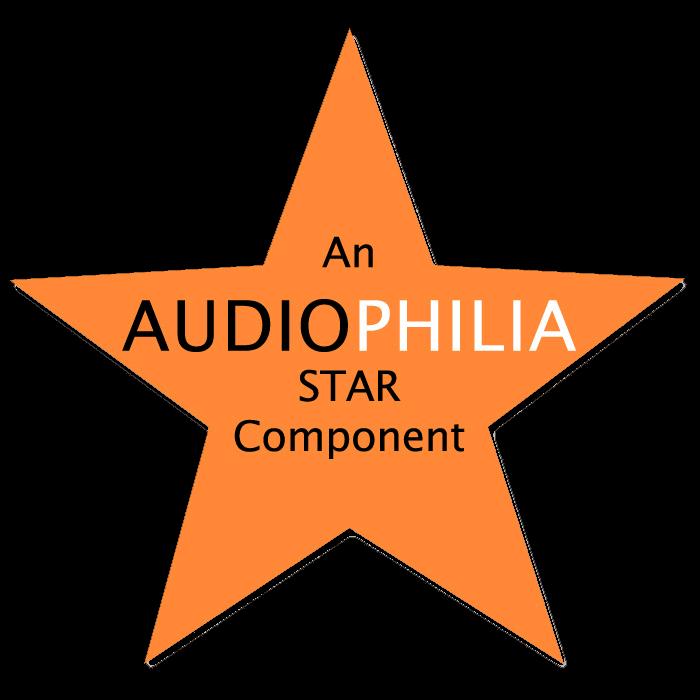
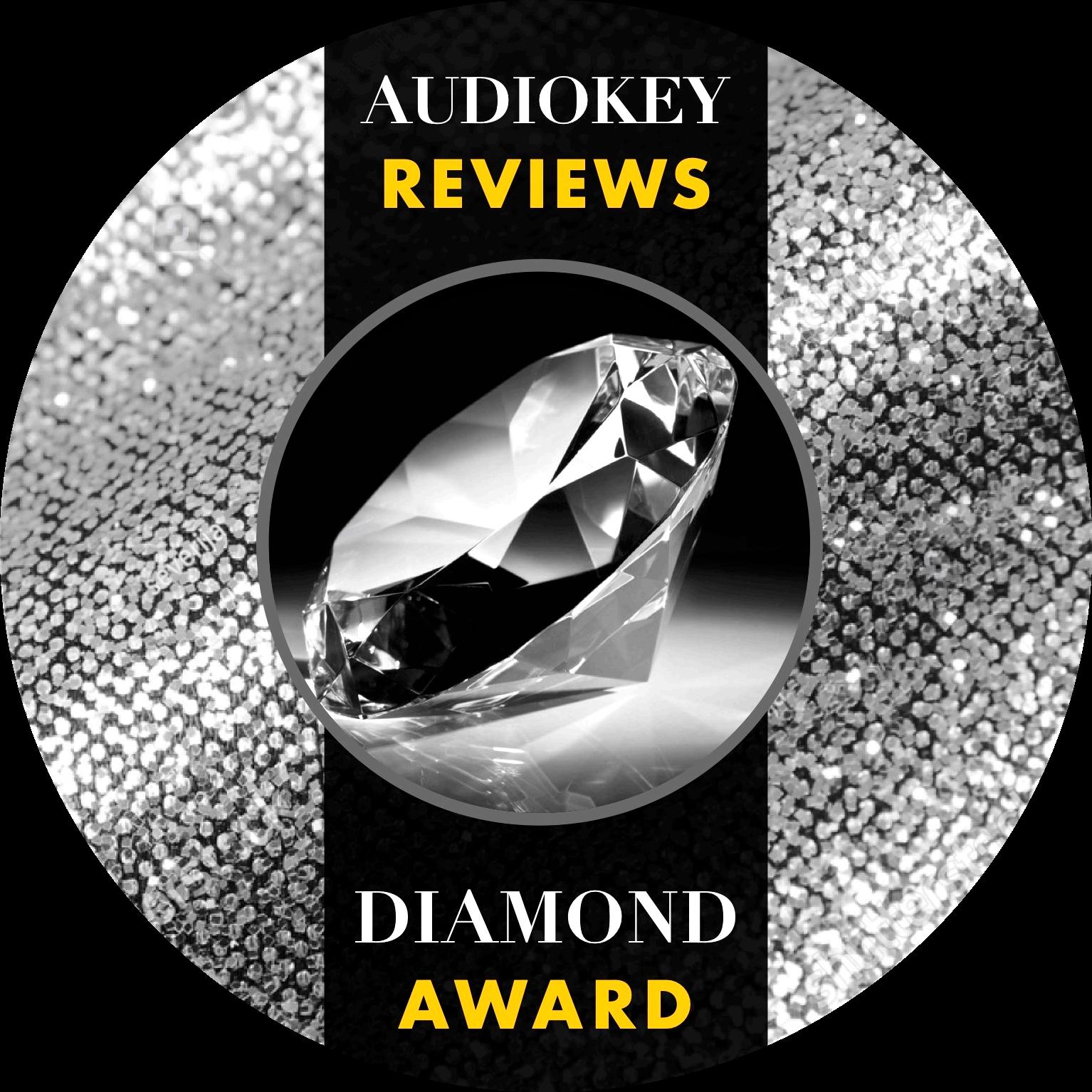



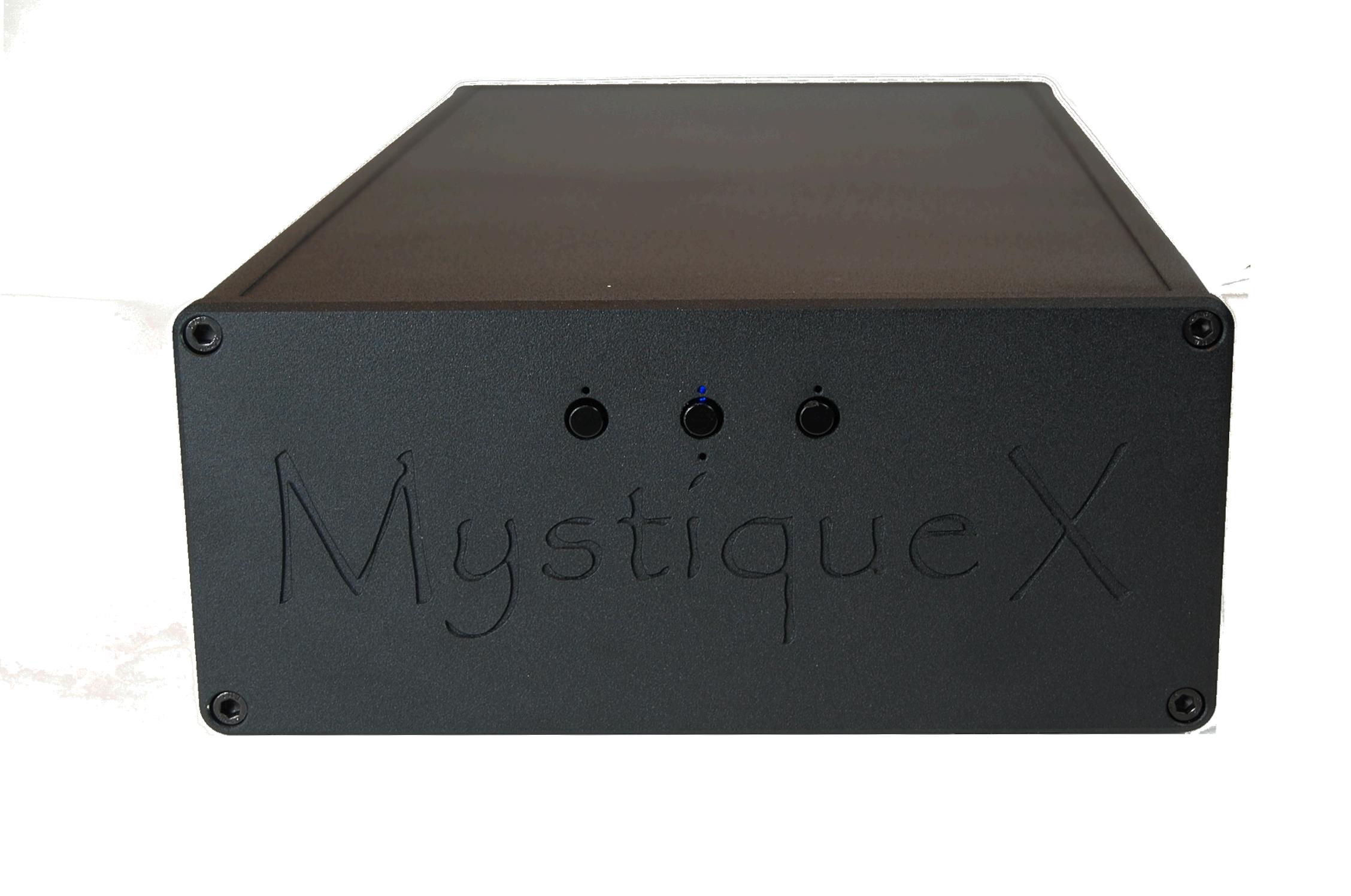
mojo-audio.com
LYRIC AUDIO TI 100 MKII


MIDRANGE

I cue an old treasure—Ella & Louis: Unforgettable Tunes (Stars Evens Digital)—and the Lyric Ti 100 MkII recreates a 60 year old performance with such outstanding technical prowess—transparency, resolution detail, layering, blistering transients— naturalness, musical beauty, and elegance sufficient to leave this reviewer completely agog. Ella’s voice is rich, elegant, crystal clear—yin—to Louis’ deeply textured, gravel-rich vocalizations—yang. And their voices are palpable/in-room, via the Lyric across the songs “Cheek to Cheek, Makin’ Whoopee, Summer Time, They Can’t Take That Away, April in Paris, Comes Love” to name a cherished and in-heart few. However, as too much time has been dedicated to merely listening and not taking notes, a replay is in order. There are few amplifiers of any type that can conjure the kind of captivating and deeply immersive listen that the Lyric is capable of and has just performed. And this remained true across all of my listening/reviewing favorites—Voces8 (Lux, Enchanted Isle, Decca Music Group), Joan Shelly (Joan Shelly, No
Quarter), Brad Meldau (Songs: Art of the Trio, Vol. 3, Warner Music), Elina Duni Quarter (Partir, Lost Ships, ECM), etc. immersion.

TREBLE+
On We Three (Prestige) the collaboration of Roy Haines, Phineas Newborn and Paul Chambers in “Reflections” rolls up and Roy Haines’ drum kit is alive and well, in-room and stage right at Casa Heartsong. And, in truth, ‘palpable’ seems droll in comparison to the beautifully corporeal, transient-quick, transparent, eerily ‘there’ drum kit, its cymbals air-splashing and ambient rich. “Say ‘hello’ to the treble heights for me, will you?” And it did. Folks, the Lyric Ti 100 MkII has knocked it out of the park and anyone wandering by Casa Heartsong would easily assume that “K” has picked up a new drum kit. “And he’s very good!” And we mustn’t forget the tactile, textured licks and strums of Chambers’ upright bass, while Phineas, stage left, tickles keys, as he flicks sweat across my carpet. Or so it seems. And once again this was true across a wide array of treble tracks—Dave Brubeck Quartet (Time Out, Columbia Legacy), Hilary Hahn (Bach:
audiokeyreviews.com
Violin Sonatas Nos 1 & 2; Partita No. 1, Decca), etc. Got to love SETs.

CONCLUSION
The tone and timbre of the Lyric Ti 100 MkII brings both naturalness and spot on realism to bear with regard to, literally, any instrument it renders, in addition to accuracy. In this respect it is the place where natural and beautiful and high fidelity find great synergy.
The voice of the Lyric Ti 100 MkII proved incisive, transparent, detailed and wonderfully (otherworldly) musical. There were also times when I questioned its SET roots relative to its listed power ratings as its control of speakers (even inefficient speakers—86dB) and its ability to drive things well into the sub-bass region was outstanding! Twenty watt SET integrated amps don’t move the kind of air or drive the bass the way the Lyric Ti 100 MkII does. Or, at least, they’re not supposed to. There was immediate magic from the Ti 100 MkII, though this was purely from a musical perspective, which was immersive in the extreme. However, after about 100 hours the magic suffused to all aspects of the Lyric Ti 100 MkII’s performance. This was easily witnessed, as it followed an exceptional pair of 200 watt/channel, solid state monoblock amplifiers with dedicated preamplifier with relatively minor lessening in overall performance. Remarkable!

Yes, I curate those products, which are generally well researched, so as to meet my rather demanding expectations/criteria. Those products that do not meet those expectations
are not engaged or are sent back and never referred to again. There have been quite a few such products. The Lyric Audio Ti 100 MkII has easily met our criteria for the DIAMOND AWARD, our highest award, which reflects on its excellence.

Pros: Incredibly musical(!), transparent, resolving, detailed, and powerful (especially at its rated 20 watts!). Also quite affordable relative to what it does in direct comparison to its much more expensive competition, which starts at double its price.
Cons: None.
THE COMPANY LYRIC AUDIO https://www.lyric-audio.de/ LYRIC AUDIO Ti 100 MkII Integrated $9,290 THE DISTRIBUTOR Alfred Kainz High-End Electronics highend-electronics.com office@highend-electronics.com
AKRM


SONNET KRATOS AMPS
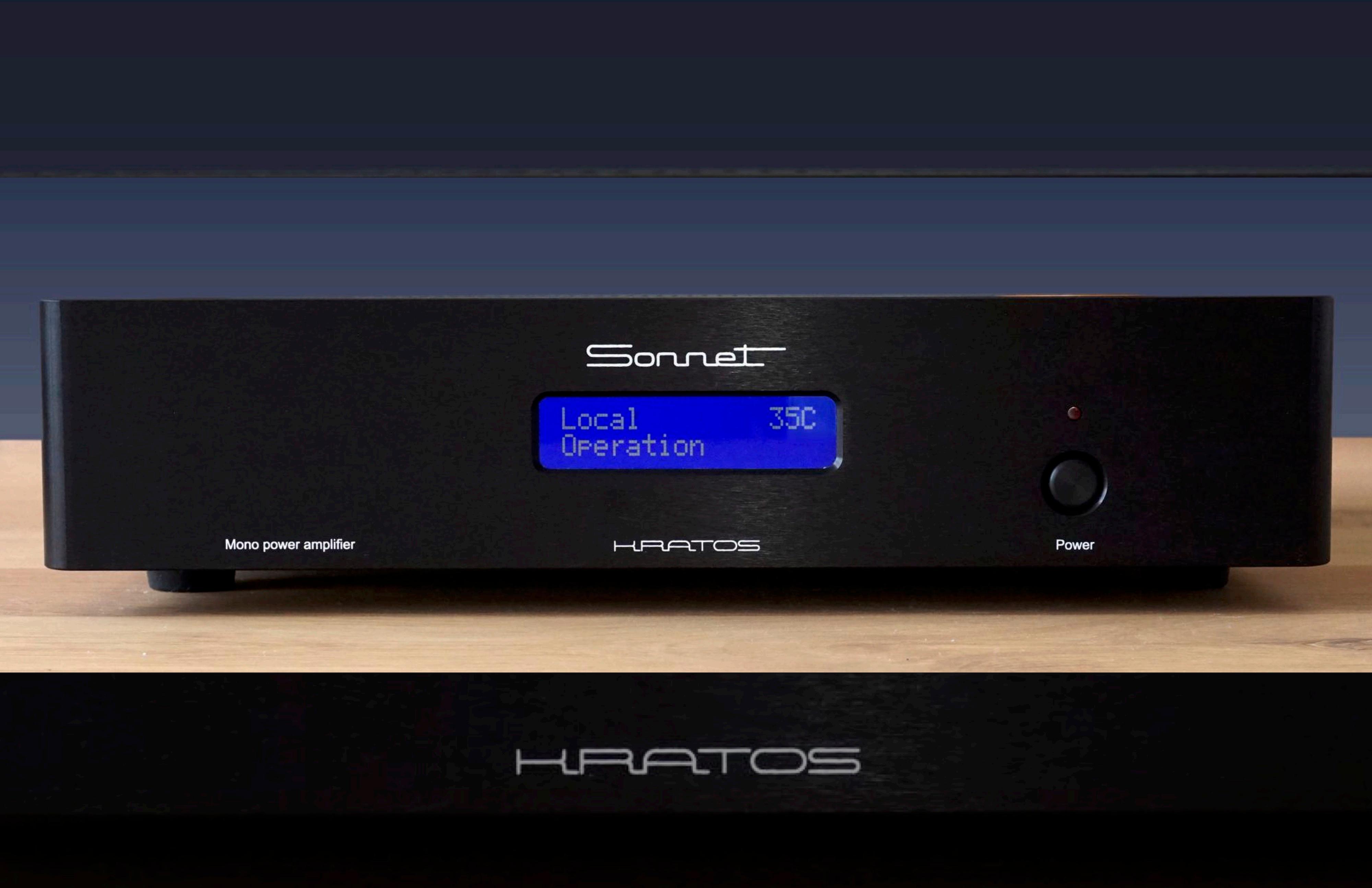 By Andre Marc
By Andre Marc

SONNET KRATOS AMPS
After having reviewed the stellar Sonnet Digital Audio combo of digital components, the Morpheus
robust power supply, and they employ judicious feedback for linearity and damping factor. The Kratos are a true balanced design, with selectable XLR and RCA inputs available. The amplifiers have a very manageable footprint, weighing in at 9 lbs each, and being no wider than a shoebox. They are very sturdy however, as the workmanship is tip top. They have a few nice most welcome features as well. There is a selectable automatic music detection circuit that will activate the amps when they receive a signal, so one does not have to turn them on or off manually. They also have a temperature read out on the front display, The amps can be ordered with a black or silver faceplate. Our samples arrived with a silver finish.
SET UP & LISTENING:
the Kratos were designed in the Netherlands by the chief architect of Metrum Acoustics, Cees Ruijtenberg.
The Kratos amplifiers use a high voltage FET transistor input and a Class A/B MOSFET output. The amps put out 50 Watts per channel into 8 Ohms and this almost doubles to 95 Watts per channel into 4 Ohms. According to Sonnet, they choose a very
The Kratos were used with by Rogue RP-5 preamplifier, a Byrston BDA-3 DAC, a Sonore microRenu 2 streamer, and the speakers were Magnepan 1.7i. The analog source was a Rega Planer 6 turntable. Cabling was Audio Art Cable all around. Everything was connected to Bryston and Audience power conditioners. No special tweaks were used aside from an Audio Art Cable power cord on each amplifier. The first album we spun was an original vinyl pressing of ABBA’s 1978 succinctly titled The Album. It features some of their most loved


audiokeyreviews.com
 Paul Cezanne - Still Live with Apples,
Paul Cezanne - Still Live with Apples,
in every way. This was an early digital recording, done with such care and attention to detail that it still stands up today against the very best recordings. It was originally released
Home”, a close second. The entire platter is a great listen. It was time travel back to our youth hearing these songs with fidelity unmatched back in those days. The layered
audiokeyreviews.com


vocals, the quirky keyboards, and the distinct vocals of Roger Hodgson were holographic and multidimensional.
We received a batch of excellent recent SACD releases, and put them to good use in evaluating the Kratos. Some of the standouts are the Mobile Fidelity DSD remasters of the entire Eagles studio output, the Analogue

but even that may not cover it. The recordings are stellar, and she is a multi instrumentalist with degrees in flute, piano, and voice. The albums are simply intoxicating, and the 24 bit downloads were so dimensional and present in the room via the Kratos that this was the highlight of the review period. We then stumbled upon a band from

SONNET KRATOS AMPS
vocals, ambient flourishes, and experimental pop to create a highly original sound. Albums like Dots And Loops, Emperor Tomato Ketchup, and Cobra and Phases Group Play Voltage in the Milky Night, all digitally remastered recently, had such presence, while the sparkling rhythms were irresistible through the Kratos and rendered with all their impeccable timing and syncopation.
The amplifiers worked flawlessly during our time with them. On one particularly warm day the front display on one of the amps indicated the operating temperature was reaching close to its maximum after an extended listening session. Interestingly, that unit did not seem overly warm to the touch. We simply shut it down for a period, let it cool then had another listening session with no issues.
CONCLUSION:
Sonnet Audio is offering excellent value here with the Kratos mono block amplifiers, taking into consideration the harmonically rich and spacious sound. It was essentially impossible to find a flaw with these beautifully built amps, and they had plenty of power to drive 4 Ohm speakers.
If a digital library is the source, a perfect pairing would be Sonnet’s own Morpheus DAC with its balanced outputs and built in volume control. In fact, this would be the shortest and purest signal path. Hats off to Sonnet Audio and their attention to detail, and for producing products that put the music first.

There are very few excellent solid state amplifiers at this price range, and even fewer mono blocks. If the goal in the design was no frills sonic purity, it has been achieved with flying colours. Highly recommended.
Kratos mono power amplifier
• 50 Watt into 8 Ohms, 95 Watt into 4 Ohms
• Class A/B
• Distortion 0.040% THD
• Output impedance 0.10 Ohms
• 110/115V AC 220/230V AC 60/50Hz
• Output Noise 310µV RMS A weighting
• Frequency Response 10 - 230.000 Hz – 3dB
• Slew Rate 100V / µSec
• Input Imp. RCA 15 KOhm, XLR 60 KOhm
• Gain: 22dB
• Max Power consumption 400 Watt
• Main Voltage 110/115V AC, 220/230V, 60/50Hz
• Dimensions 290 x 250 x 60 mm
• Weight 3.9KG
THE COMPANY/DISTRIBUTOR
Rob Fritz
Audio Art Cable
San Diego, CA 92115
Direct: 619-255-6451
Voice or Text: 619-417-3035
rob@audioartcable.com
AKRM
 Paul Gauguin - Still Life 1848-1903
Paul Gauguin - Still Life 1848-1903



LS1 www.grimmaudio.com
These are the most immersive, dynamic, detail-rich, nuanced, elegant, engaging, emotional, and yes, musical speakers I have ever heard. By far.
Timothy Roth, Positive Feedback

\
Wayne Thiebaud - Flatland River, 1997


mytek.audio



WIREWORLD ETHERNET
 By K. E. Heartsong
By K. E. Heartsong

Awhen your system is at, well, reference level—“exceptionally transparent and resolving, detailed, and eminently musical”—how can you efficiently and cost-effectively improve it? Improve it, that is, while keeping all current components “signed to long-term contracts.” In other words, while maintaining the continuity of your reference system. Tweaks was my answer to the previous review and that holds true for this review as well. Tweaks?

“What are tweaks? First, tweaks are things that can ostensibly improve the fidelity—the overall sound—of your audio system for relatively little money. Tweaks can be wires or cables or risers that keep cables above the floor. Tweaks can be isolation platforms or stands or isolation feet or pucks or cones. Tweaks can also be spiked feet (surface-
materials—particular kinds of wood or carbon fibre or stones or a composite material. Tweaks can also be devices purposed with diminishing Electromagnetic Interference (EMI) or Radio Frequency Interference (RFI), etc. Or perhaps tweaks can be the combination of an inert, composite material embedded with, say, electronic innards—internal trap circuits—that defeat EMI and/or RFI.”

Some say that tweaks are, well, a version of “snake oil,” not dissimilar from that sold to Dorothy (see Wizard of Oz). Certainly, there are tweaks that are, well, ineffective. But to classify all tweaks in a similar fashion, certainly with respect to cables and wires, is like saying that all metals—gold, silver, platinum, brass, copper, iron, lead, nickel, etc.—are “the exact same and we might as well call them all…brass.” Seem like a winning argument to you? Yeah.

audiokeyreviews.com
 August Renoir - Portrait of Jeanne Samary, 1877
August Renoir - Portrait of Jeanne Samary, 1877
The tweak currently under review is a series of ethernet cables from WireWorld, a company established in 1980 by David Salz, who applied the adage “necessity is the mother of invention” to produce cables and wires that would improve the music and video of his clients (or reviewers).

REFRAIN: Unlike most reviews, this review will be non-sequential, as it will start with how the equipment actually sounds and not the process of physically “undressing” it and/or laying out its various accoutrement, specifications, etc. Think of this review then, as a non-linear movie—Memento, Kill Bill, Pulp Fiction, Eternal Sunshine of the Spotless Mind, The Queen’s Gambit, In the Shadow of the Moon, etc.—that likewise starts at the end and winds its way to the beginning.
THE SETUP
For this review, I again used my most transparent and resolving electrostatic headphone system to more easily determine the differences, if any, between the various WireWorld supplied ethernet cables.
I began with that Basic Black ethernet cable that we all receive with our various streamers, DAC/streamers, etc. Its analysis would serve as the baseline for evaluating the suite of WireWorld cables—WireWorld Platinum Starlight 8 Twinax (Silver), Starlight®
8 Twinax Ethernet Cable (Red), and the Chroma™ 8 Twinax Ethernet Cable (Yellow)— currently under review.
The system used for the cable review comprised the Mola Mola Tambaqui as both
DAC/Streamer, the Silent Angel Bonn N8 Pro Network Switch, the Blue Hawaii Special Edition (BHSE) Electrostatic Headphone Amplifier, and the Dan Clark CORINA Electrostatic Headphones (review coming). Analog cables and power cords were Audience Front Row and AntiCable. Power conditioning was provided by the TORUS POWER RM20.
I kept things simple in terms of the streams that would be used for evaluation. I utilized Dave Brubeck’s “Time Out” (Take Five, Columbia), Ólafur Arnalds “Árbakkinn,” and Joan Shelly’s “We’d Be Home” (Joan Shelly, No Quarter). My familiarity with the various pieces would make the evaluation all the easier.
I had spent quite some time with the various cables, and as it came time for the head to head to head reviews, I began the proceedings again with the Basic Black ethernet cable.
THE SOUND
Basic Black Ethernet Cable
“Time Out,” “Arbakkinn,” “We’d Be Home”
The one word that best describes the Basic Black ethernet cable’s relative voice is opaque. Relative to the WireWorld trio, its opacity would tamp down transparency and resolution while making detail retrieval all the more difficult from a higher noise floor, at the same time greatly diminishing both air



WIREWORLD TWINAX ETHERNET audiokeyreviews.com
and ambiance. Joe Morello’s cymbals did not attain their airy, well resolved ambiance, nor was there the same level of dimensionality. The sound stage volume, as a result, was compressed. And given the Basic Black’s limited or truncated frequency response, bass was also diminished, the treble abbreviated, and overall engagement with the music was not as immersive or natural.
I would characterize the Basic Black ethernet cable as perhaps a high-school musician playing unpaid gigs here and there and “good enough,” but not yet skilled or experienced and maybe, just maybe, in the end, only quasi-talented.
Chroma™ 8 Twinax Ethernet Cable


“Time Out,” “Arbakkinn,” “We’d Be Home”
The WireWorld Chroma 8 Twinax ethernet cable is less opaque, more open, with improved dynamics, and an expanded frequency range relative to the Basic Black. The Chroma 8 Twinax’s bass goes deeper and is tighter, though it still does not have the impact of its siblings. Further, tone/timbre are more natural and more musical, which draws you into the music, unlike the Basic Black, which holds you at a distance. Resolution is improved as well and Joe Morello’s cymbals and bass drum are, respectively better resolved and

more extended. And in terms of the voice, there is less sibilance and the voice is now richer, more robust, and not characterized by the relative thinness of the Basic Black. Overall, the Chroma 8 Twinax, relative to the Basic Black, has more transparency, is more coherent, more dimensional, and more immersive. It also extends the frequency range. I would characterize the Chroma™ 8 Twinax ethernet cable as a discovered musical talent with all the goods and the natural ability, but it has yet to acquire the skill of the journeyman or master musician. Small off-thebeaten-path concerts and the coffee house are the boot camps of sorts where they excel, though refinement and nuance and air between notes is only grasped at by the Chroma™ 8 Twinax.

Starlight® 8 Twinax Ethernet Cable
“Time Out,” “Arbakkinn,” “We’d Be Home”
The Starlight 8 Twinax brings better refinement and nuance, more air and ambiance with more natural tone/ timbre, which together are immediately more immersive. Cymbals are now light, airier, and beautifully resolved. Suffice to say that the Starlight 8 Twinax is much less opaque than the Chroma and certainly the Basic Black. Further, what the
WIREWORLD TWINAX ETHERNET
added air and ambiance bring to the performances are greater dimension and an expanded soundstage. Dynamics are more impactful (see Joe Morello’s bass drum), transient responses more energetic, and bass notes are weightier, more transparent, and more easily resolved. The “inner volume” of the bass drum now begins to come into play. Sibilance is also much reduced. Overall, the Starlight 8 Twinax is far less opaque, of greater texture, with improved, realistic, and more natural tone/timbre, and it is more palpable. Its frequency response is still more improved.
I would characterize the Starlight® 8 Twinax ethernet cable as the very talented journeyman musician who plays at mid-tier to high venues across the country, has gained a name and a following, and clearly understands refinement and nuance. This musician has also begun to understand that air and space and nuance are part and parcel of a next-level performance, where quiet gives relevance to the notes. The confidence is there but in the end, the jazz master’s inherent superb talent escapes.
Platinum Starlight 8 Twinax Ethernet Cable “Time Out,” “Arbakkinn,” “We’d Be Home”
The Platinum Starlight 8 Twinax, which has become the ethernet cable of choice at Casa Heartsong, steps things up quite a bit across all relevant categories. The

refinement and nuance, air and ambiance rise far above all the preceding ethernet cables and together with improved tone/timbre, facilitate the most open, natural, and immersive performance. The Platinum Starlight 8 Twinax is more transparent and resolving and able to “unearth” detail to a far greater extent than its siblings; no doubt the solid silver (OCC®-7N) plays an instrumental role here. There is greater weight across the entirety of the frequency spectrum, which introduces greater palpability and a you-are-there corporeal reality for both performers and instruments. None of its siblings possessed this trait, certainly not to this degree. The weight referenced above also instigates greater dynamic impact as well as greater treble energy. Overall, the Platinum Starlight 8 Twinax recreates the most transparent, resolving, detailed, natural, and immersive performance of all ethernet cables here at Casa Heartsong, to date. It handles the full frequency spectrum beautifully.

I would characterize the Platinum Starlight 8 ethernet cable as the most exceptionally skilled and experienced musician—the master musician—who as a result plays with skill, refinement, and nuance, and who possess the ability to pull you into the performance via unmatched talent, exceptional pacing, and the ability to place air and space between notes. Platinum Starlight 8 provides a performance with overriding confidence and certainty and ability.

audiokeyreviews.com
NOTE: For those who may be less able to parse differences in a given cable’s abilities onthe-fly, I’d suggest the Long Term Trade Out (LTTO). That is, live with the cable for a while —several days, a week, month, etc.—then remove it and replace it with your prior ethernet cable. You should have a pretty good idea after this what’s what in terms of sound.
CONCLUSION
Yes, that last six feet or two metres of ethernet cable can decidedly make a difference, despite the miles and miles of wire/cable that precede it. After all, the folks who bring us the various cables for our systems, or at least many of them, have put in crazy hours on research and development working out ways to make it so. That is, making sure that the last measure of cable will improve or even dramatically improve the fidelity of your audio/stereo/video systems via the reduction of the various nasties —jitter, EMI, RFI, etc.
WireWorld has done its work with regard to its triumvirate of ethernet cables—
WireWorld Platinum Starlight 8 Twinax, Starlight® 8 Twinax Ethernet Cable, and Chroma™ 8 Twinax Ethernet Cable—that will absolutely improve the signal intended for your stereo system (or even your TV). So if you’re using the Basic Black or Grey or White cable, well, fuhgeddaboudit. There’s better to be had out there with a good two- metre, well engineered ethernet cable from WireWorld starting at $87.
That being said, we highly recommend the WireWorld’s ethernet cables. And as you go up
the line of ethernet cables, our recommendations get higher still, until you reach the WireWorld Platinum Starlight 8 Twinax, a decided BLUE MOON AWARD winner.
Pros: Inexpensive tweak that brings improvement to your music streams and, no doubt, your video streams as well.

Cons: None.
COMPANY WIREWORLD

Platinum Starlight 8 Twinax (2m): $1,500
Starlight® 8 Twinax Ethernet Cable (2m): $350: Chroma™ 8 Twinax Ethernet Cable (2m): $125
wireworldcable.com
info@wireworldcable.com
(954) 474-4464
AKRM
 Vincent Vang Gogh - The Yellow House
Vincent Vang Gogh - The Yellow House





BDI ELEMENTS CONSOLE


 By K. E. Heartsong
By K. E. Heartsong

BDI ELEMENTS CONSOLE



My first experience with a BDI Console came in my Napa, CA home. I had ordered two of its CORRIDOR Models—8177 and 8179. The longer of the CORRIDOR (8179) Consoles housed my two-channel reference system

accessible. So beautifully did the CORRIDOR Console conceal the headphone electronics and the various wires attached to them that one would have been hard pressed to find discontinuity in the overall aesthetic, as it appeared free of all electronic wires.
The BDI Consoles had also been optimized for connectivity via generous pass-throughs for wires and cables, with the added
and the shorter CORRIDOR (8177) became my headphone bar. They were not only beautiful in my favourite design motif— MidCentury Modern (MCM)—but their functionality was singularly impressive.
In its role, the larger CORRIDOR held within all manner of audio componentry—preamplifiers, amplifiers, streamers, DACs, a power conditioner, etc. And they were all well accommodated within the generously sized BDI CORRIDOR Console.
The second CORRIDOR Console, used as a headphone bar, allowed for the storage of all electronic equipment within and through its vented front facade; access to all equipment was easily maintained. The headphones themselves sat atop the Console, appropriately spaced, affixed to stands, and
system and my headphone bar was meticulously arranged, and few were even
audiokeyreviews.com
 Vincent Van Gogh - Chair with Pipe
Vincent Van Gogh - Chair with Pipe

BDI ELEMENTS CONSOLE
aware of what lay within the beautiful CORRIDORs. That is, until the music began playing; then there was great interest to find what was hidden beneath.
The two CORRIDOR Consoles had blended incredibly well with the overall MCM motif—the Eames Chair, the MCM dining table and chairs, coffee table, etc. And my significant other at the time thought the consoles quite beautiful.
When I decided to leave California to move to the Midwest—first Wisconsin, then Minneapolis—I decided to leave the two Consoles with my now former significant other and she was quite pleased indeed. She still owns them to this day, several years later.
Fast forward to my new home in Minneapolis, and Casa Heartsong East in a high-rise apartment building whose date of construction sets its squarely in the midst of MCM design and yes, MCM again serves as my design motif.

I contacted BDI once again after looking through its current offerings for an audio/ media console that would beautifully match the interior decor and again lend its tremendous functionality. This time, however, I’d only need one console, as my headphone


passes across its face from the room’s quite large picture window, the wheat stalks appear to come alive with movement.
Between the gaps in the wheat stalks lies a backing screen that allows for 1.) remote contact and control of the equipment therein, and 2.) the absorption and diffusion— sound treatment—of sound that travels to it. It has proven nicely effective in this manner. Yet the ELEMENTS Console also easily accommodates additional forms of component isolation/treatment—footer cones, bases, etc.— within its generous interior, further improving the fidelity of the music.
audiokeyreviews.com
BDI ELEMENTS CONSOLE
Speaking of the ELEMENTS Console’s generous dimensions, its 20-inch depth allows most turntables to sit atop it and on an isolation base if needed. And its mid-section interior, at 40 inches in width and 18 inches in height, accommodates the vast majority of

invisible. I did decide to keep my streamer atop the WHEAT Console as a marker, if you will, that exceptionally talented components lie within.
Well, to sum up, there are four benefits of the BDI ELEMENTS console that I’ve come to know, besides its gorgeous looks.

First, there is its exceptional builtin cablemanagement system, which allows for a great deal of freedom of connectivity.
components, save for those component monstrosities, you know the ones, whose engineers/owners get more than a little carried away. I’m sorry, but who wants or needs a four foot tall or a 28-inch deep amplifier? I wonder if the engineers/owners know that they’re 1.) possibly breaking up marriages or 2.) banishing said owners of such monstrous equipment to listening dungeons and root cellars.
In my case, there was no component that could not be comfortably accommodated within the BDI ELEMENTS Console. And this not only provided for clean, optimally managed cable runs, but again, the “hi-fi” interior components remained completely

Second, it provides its own sound diffusion and absorption modalities via its front mesh of perforated steel panels, and greater isolation can be had, as mentioned above, via third-party equipment— footers, cones, isolation bases, etc. Third, it has the option of wheels, which can be discreetly hidden away, a true bonus for reviewers. Lastly, at least for me, there is its flawless design continuity with my MCM design motif, which it beautifully complemented, and it is very “significant-other friendly.”
Further, the combination of the ELEMENTS Console’s inherent isolation abilities, even when coupled to third-party isolation devices, is considerably more costeffective than the various hyper-expensive
audiokeyreviews.com

BDI ELEMENTS CONSOLE
component racks of the day. And this I know with great certainty.
In the end, I have an aesthetically beautiful audio/media console in the BDI ELEMENTS WHEAT Console that comports itself beautifully in a MCM interior design motif. It houses my reference gear with exquisite care, provides sufficient room for it to breathe, isolates the gear via rigid construction, and it moves(!) to facilitate easy switching-out of gear. The BDI ELEMENTS WHEAT Console also hides my system away, making it invisible yet always easily accessible. Suffice it to say that designers love this BDI Console.
In the end, I could not be more pleased with the BDI ELEMENTS WHEAT Console (ELEMENTS 8779 CO) and as a reviewer, that’s saying a great deal. The BDI ELEMENTS WHEAT Console in walnut is a clear choice for our GOLD KEYNOTE



 AWARD for both functionality and beauty. Bravo!
AKRM
AWARD for both functionality and beauty. Bravo!
AKRM
audiokeyreviews.com

Wayne Thiebaud - Street and Shadow, 1982–1983


 Vincent Van Gogh - Fishing Boats on the Beach at Saintes-Maries
Vincent Van Gogh - Fishing Boats on the Beach at Saintes-Maries
 By K.E. Heartsong
By K.E. Heartsong

SHAKTI
ELECTROMAGNETIC STABILIZERS


Well, what do you do when your system is at reference level— exceptionally transparent and resolving, detailed, and eminently musical? Perhaps you push the boundaries to see if there is yet more. Though not in the sense of spending goo-goobs more money to take it further, as that would no doubt change the actual system itself, and from a reviewer’s perspective that would be less efficient. No, the
materials—particular kinds of wood or carbon fibre or stones or a composite material. Tweaks can also be devices purposed with diminishing Electromagnetic Interference (EMI) or Radio Frequency Interference (RFI), etc. Or perhaps tweaks can be the combination of an inert, composite material embedded with, say, electronic innards—internal trap circuits—that defeat EMI and/or RFI.


This last tweak combination—an inert,
art here, while stabilizing the continuity of your system, is to push it ever closer to “high fidelity” nirvana, but for a fraction of what your reference system cost via, well, tweaks.
What are tweaks? First, tweaks are things that can ostensibly improve the fidelity—the overall sound—of your audio system for relatively little money. Tweaks can be wires or cables or risers that keep cables above the floor. Tweaks can be isolation platforms or stands or isolation feet or pucks or cones. Tweaks can also be spiked feet (surfacemounted or screwed-in) or certain inert
composite material embedded with electronic circuits for battling EMI and RFI—brings us to the subjects of this review, the Shakti Stone Air ($199) and the Shakti On-Line Air ($99) Electromagnetic Stabilizers. These two patented inventions were born from the research and development of Ben Piazza, the founder and owner of Shakti Innovations.
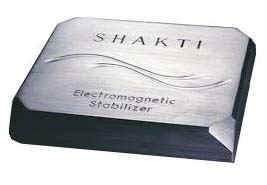

I must say that I have been aware for a very long time of Ben’s Shakti Hallograph Soundfield Optimizers (review coming), which in truth brought jaw-dropping results when heard at shows or at friends’ homes. But as the

audiokeyreviews.com
SHAKTI STONE AIR & ON-LINE AIR
 Wayne Thiebaud - Betty Jean and Book
Wayne Thiebaud - Betty Jean and Book
SHAKTI STONE AIR & ON-LINE AIR
review of the Shakti Hallograph Soundfield is scheduled, I won’t get ahead of myself in this review.

Well, as always, the question remains: do the Shakti Stone Air and the Shakti On-Line Air Electromagnetic Stabilizers actually work, or are they ultimately destined to go on the “return to manufacturer” list?

REFRAIN: Unlike most reviews, this review will be nonsequential, as it will start with how the equipment actually sounds and not the process of physically “undressing” it and/or laying out its various accoutrement, specifications, etc. Think of this review, then, as a non-linear movie —Memento, Kill Bill, Pulp Fiction, Eternal Sunshine of the Spotless Mind, The Queen’s Gambit, In the Shadow of the Moon, etc.—that likewise starts at the end and winds its way to the beginning.
THE SETUP
For this review, I used my most transparent and resolving electrostatic headphone system to more easily determine whether or not there
would be any noticeable or dramatic benefits when placing the Shakti Stone Air and/or the Shakti On-Line Air Stabilizers on the various components.
The Shaktis, when placed upon a component or a speaker, are purposed with reducing electromagnetic, radio frequency, and microwave interference. The “how” of this patented invention is no doubt buried with the composite “stone” body and betwixt the various enclosed circuits— Microwave, RF, and Electric Field. I will leave the technical discussion for my interview with Ben Piazza.
The electrostatic review system comprises the

Tambaqui as both DAC and Streamer, the Silent Angel
Bonn N8 Pro Network Switch, powered by the Silent Angel F2 Power Supply, the Blue Hawaii Special Edition (BHSE) Electrostatic Headphone Amplifier, and the Dan Clark CORINA and the STAX SR-009S Electrostatic Headphones. Cabling is via Audience Front Row Cables and Wires and AntiCable Power Cords. Power conditioning is handled by the TORUS POWER RM20 Conditioner.
Mola Mola
audiokeyreviews.com
PURPOSE: The Shakti Stone Air Stabilizer is meant to go atop (or below) your componentry—CD player, DAC, Pre-Amp, Amplifier, etc.; whereas the Shakti On-Line Air Stabilizers, two per pack, are meant to go at the midpoint of a pair of wires or at the endpoints of a power cord via velcro attachment.


THE SOUND
After I had listened to several short tracks— Joan Shelly’s “Wild Indifference” (Joan Shelly, No Quarter), Elina Duni’s “Moneu amour” (Partir, ECM), Olafur Arnalds’ “Árbakkinn” (Island Songs, Mercury (Universal France)), Anouar Brahem’s “The Astounding Eyes of Rita” (The Astounding Eyes of Rita, ECM)—that I was very familiar with, I placed the Shakti Stone Air on the top midpoint of the Mola Mola Tambaqui DAC/Streamer. I listened again.
Immediately, the background was quieter— black quiet—some would say that the “noise floor” had dropped. This resulted in greater transparency and resolution and thus more overall detail—more information. Improved air and ambiance provided the sense of greater volume/dimensionality to the recordings of the various tracks.

But the improvements didn’t stop there. Vocals were less sibilant—no sscchhss; there was better articulation, which revealed every
word/lyric as more clearly and more easily discernible. Vocalization, as a direct result, was smoother, more natural, and every track became, well, more listenable and immersive. Additional improvements came in tighter bass across bass drums and standup bass, etc.; more distinct guitar, cello, and violin plucks/strums;
and more definitive, air-infused percussions. Given the reference system’s starting abilities, the level of improvement was not at all anticipated, but there it was.
Further, tonal/timbral accuracy was much improved, which certainly lent itself to the naturalness of the music, and yes, digital became more “analog-like” via the rendering of the various tracks. The Shakti Stone Air was performing as one of the best, most costeffective tweaks I’ve used in a very long time. This was not guesswork and was easily
SHAKTI STONE AIR & ON-LINE AIR

well as other components across the twochannel reference system (see “Systems” below).

Given the incredible success with one Shakti Stone Air, I was curious to place the Shakti On-Line Airs in the system, on the interconnect cables feeding the DAC. For immediate memory, I replayed the tracks with the Shakti Stone Air on the Mola Mola DAC/ Streamer. I then placed the Shakti On-Line Airs at the midpoint of the Audience Front Row XLR interconnects. I listened. What the Shakti Stone Air had improved, the Shakti On-Line Airs further improved, and in every respect. The sound stage had blossomed in volume as air and ambiance expanded and tone and timbre were more
“quiet.”
Here’s an interesting bit of information regarding the Shakti Stone Air: whenever it was placed upon a component, it was necessary to actually turn down the volume. This was, of course, completely unexpected. The rationale certainly had to be that less noise in the system, which the Shaktis definitely alleviated, called for less volume to hear the music. Or so my logic goes.
NOTE: For those who may be less able to parse differences in a given tweak’s abilities on-the-fly—short-term—I’d suggest the Long Term Trade Out (LTTO). That is, live with the Shaktis for a while—several days, a week, month, etc.—then remove them. You should have a pretty good idea after this what’s what

audiokeyreviews.com
in terms of the sound. The LTTO will, for me, represent a follow-up review for the Shaktis..

THE CONCLUSION
I could not have anticipated the level of improvement with regard to the Shakti
certainly don’t. In summary, the Shaktis have served as one of the most cost-effective and capable tweaks I have used to date.
Pros: Inexpensive tweaks that bring component-level improvement to even your reference system for very little money, hands down.
Cons:… THE COMPANY


SHAKTI INNOVATIONS
https://www.shaktiinnovations.com/
Stone Air—Electromagnetic Stabilizer $199

Oline-Air—Electromagnetic Stabilizer $99
info@shakti-innovations.com
experience with Ben’s Hallograph Soundfield Optimizers, I assumed that there would be improvement. How much would be determined by analysis and review. Well, the short and sweet of it is that the Shakti Stone Air and On-Line Air work immediately and beautifully together. They took our electrostatic reference system to even greater high-fidelity heights than we could have imagined. The improvements can be summed up in a few words—more transparent and resolving, more natural, more musical. Once they’ve been placed in your system, I don’t believe you’ll want them to leave. I
AKRM
 Rene Magritte - L’homme au chapeau melon
Rene Magritte - L’homme au chapeau melon


A PUBLIC SERVICE BY AUDIOKEYREVIEWS legionofhonor.famsf.org
San Francisco
AUDIO MIRROR TUBADOUR DAC
 By Oliver Masciarotte
By Oliver Masciarotte

AUDIO MIRROR TUBADOUR MKIV DAC

If one were to assume I have a bias about digital–to–analog converter architectures, which I do, it would speciously point to non–oversampling DACs as my preference. Of late, I have reviewed the Merason frerot, MUSICIAN’s Pegasus and Mojo Audio’s Mystique X SE. All of these are firmly in the non–oversampling (NOS) camp. As pop burnout Britney once sang, “Oops!... I Did It Again”.
Of the aforementioned products, the first and last in the list piqued my interest for the two differing ways they smoothed the aural edges of the incoming data, making for a rounder, sometimes less biting delivery. Cost wise, at $1450 the Merason is affordable while the Mojo Audio’s cool $10k price tag would cause all but the most comfortable to give pause. The topic of today’s review sits snugly in between. At $3,500, the Tubadour IV SE DAC, henceforth also the “T4,” is well within reach of many if not most music enthusiasts seeking digital enlightenment.
Hand built by Vladimir Bazelkov and his tiny team at Audio Mirror, the Tubadour IV SE is his fourth generation of R–2R, non–oversampling DAC. The SE designation stands
for Signature Edition, though there is no Standard Edition as with past models. The T4 is designed and built in the US, and features a USB re-clocker, ultra–low noise power supplies
and two out–of–production Analog Devices

AD1865 18 bit monolithic multibit DAC chips. The AD1865 is a stereo device, and using both internal channels for each of the T4’s channels yields better linearity and lower noise. Multibit designs combine R–2R and delta sigma techniques on the same device. Bazelkov’s USB implementation starts with the industry standard XMOS chip, then re–clocks the data using a high quality, low noise/low phase distortion crystal. As you may have noticed in past reviews of mine, clean power supplies are essential to higher fidelity. The T4 incorporates separate, very low noise low power supplies for USB and its reclocker, and an “ultra low noise,

audiokeyreviews.com
 Paul Cezanne - The House of Dr. Gachet in Auvers sur Oise
Paul Cezanne - The House of Dr. Gachet in Auvers sur Oise
MOSFET power supply” and regulation for high voltages, according to Bazelkov. The plain jane, all aluminum casework is shared by Audio Mirror’s LINEA ultra wideband, hollow state preamp. As with the pre, on the T4 the user interacts with the product via refreshingly simple controls; a rotary power knob and an input selector. That’s it! No noise–inducing LCD display, no multicolored Christmas lights. The signal itself is also handled with care. Silver wires carry the music for all signal paths, and silver–plated copper makes up the rest. Once the raw signal exits the double AD1865 DAC chips, special resistors are used for the “I/V” or current–to–voltage conversion. The tube analog section has no capacitors in the signal path; “…the best capacitor is no capacitor,” Bazelkov opines. Lundahl output transformers were selected, after many trials and tests, to provide impedance matching for the vacuum tube. The designer holds a minimalist outlook, “…not to save parts” (reducing the cost of materials) but because “…it’s the best sounding approach.” The tube was selected from many different options, types (pentode/triode) and models for the same reason. “It’s the best sounding with the most linear and neutral nature. It happens

to be an ECC88 which is a very popular tube and readily available. Many people ask why is there one tube for both channels. They don’t realize that this is a double triode. So, yes; one per channel.” An ECC88 should last around 5,000 to 10,000 hours, depending on whether
it’s New Old Stock (also “NOS”) or from new production. Bazelkov mentioned that the Russian 6H23P is probably the second best sounding tube after Siemens or Tesla, not JJ Tesla he stresses.

On to the music…I ran the T4 through its paces, playing locally stored files as well as Qobuz streams. From Red Book rips and DXD files to recent releases, it was most pleasurable to sink into some quality listening. Mad Buggle man Trevor Horn produced one of my all time fave pop songs, the 1991 hit “Crazy” by Seal. It has been endlessly remixed and was rereleased in 2022, with aggressive re–equalization and a

TUBADOUR
DAC
AUDIO MIRROR
MKIV
AUDIO MIRROR TUBADOUR MKIV DAC


noticeable 3dB bump up in volume. I have the CD version but, for this review, instead I chose that slightly hyped remastered stream [Qobuz 44.1/24 Rhino–Warner Records]. It has a sharp top and louder low end that the 16/44.1 original lacks, making for a more obvious comparison. The remaster also includes the infamous shorter original “premix” that Horn updated and extended for the subsequent wider release. The Tubadour IV SE delivered on the axiom, “Go big or go home!” A wide soundstage, with silky detail and muscular bottom, all blended into a delicious whole. There’s a breakdown in the song at 4:59 and a huge synth bass drum comes in at 5:17. The mix is already over the top but this “kick” brought a smile to my face as it pressurized the room. For a different perspective, I had Mytek’s oversampling Liberty DAC II in house for an upcoming review. At half the price, you’d expect lesser performance and you’d be right. Now, the Liberty DAC II isn’t chopped liver but it lacks the subtle refinement exhibited by the Tubadour.
Straight out of Akron Ohio, jazz guitarist Dan Wilson’s latest is an uptempo romp through his own original material as well as
chestnuts like “Eleanor Rigby” [Qobuz 48k Mack Avenue/Brother Mister Productions]. I’m not usually a fan of guitar jazz, but Things Eternal is powerful as well as subtle, with clean, modern engineering and a pleasant, close mic’d sound. About a minute in, the band lays back for an extended, minute–long solo by bassist Brandon Rose. As before, the soundstage was diminished through the Liberty DAC II, flatter and narrower.
Being a new–fashioned oversampling design, I would have expected the Mytek to be more precise, but this wasn’t the case. Well, I had to pick a descriptor to typify the two DACs, for the Liberty II I’d have to choose “taut” at the top and bottom. As seems to be the case when comparing well executed R-2R and oversampling designs, they are fundamentally different views of the same work. Overall the T4 is “relaxed” in the bottom and top, without blurring or loss of detail. Aggressiveness in recordings is managed through the T4. With present technology, only a locally stashed DXD file can be played back undisputedly at 352.8kHz. MQA can unfold to that sample rate but it won’t be completely

DSD, at least double (a.k.a. DSD2 or “DSD128”) to really communicate the complexity of the instrument. Morten Lindberg’s immaculate 2008 release of String Quartets vol. I: Haydn-Solberg-Grieg by Engegårdkvartetten [352.8/24 2L] gets the job done nicely, as does the Tubadour. Four busy bowed instruments under condenser mic scrutiny, two violins plus a viola and cello, can sound scratchy, slightly confused and often bleached of their richness. T4 to the rescue, imparting the texture and bite without being biting, yet still sketching the acoustical outlines of the venue; Oslo’s intimate, wooden A–frame Jar Church.
Husband and wife team Michael Trotter, Jr. and Tanya Blount make up The War and Treaty. Their R&B tinged Americana cut “Ain’t No Harmin’ Me” from their 2023 album Lover’s Game [Qobuz 96k UMG Nashville] is a full throated rebuttal of Satan’s evil behavior. Blount and Trotter perfectly play off each other in a recording impeccably captured by studio

product, with the T4 exhibiting a lush panorama of keys, percussion and guitar all placed in a tasteful reverberant space. These two have serious pipes and the Tubadour let’s you slip into Blount’s sweet sound, at times reminiscent of Aretha. Despite overdubbing, each and every aspect of the mix is clearly conveyed thanks to the T4’s ability to delineate and define subtlety without harshness or grit. The T4 portrays the album’s production refinement which eschews the excess polish often heard in many Nashville recordings. A side note about Bazelkov’s chops. I was fortunate enough to hear the upcoming Tubadour V on his home system. That rig consists of horn–loaded speakers and hollow state amplifiers, both of his own design and construction, as well as a next generation Tubadour. For comparison, he had another DAC in the house. At $30k, one that would stretch the budget of the majority of audiophiles. Comparing LampizatOr’s flagship golden behemoth The Pacific, the T5 offered a


more solid low end, improved midband clarity, and a cleaner, more extended top. This is an excellent example of smart design triumphing over eye candy.
“Pretty In Pink”, the fifth track on Lola Young’s new My Mind Wanders and Sometimes Leaves
Completely
[Qobuz 44.1k Universal/ Island Records], is a big pouty multitrack mess of ennui and weariness of a relationship going south. When the jazzy bass comes in near the end, it’s a snappy surprise that T4 delivers out of the generous reverb wash. Liberty DAC II produced a soundstage confined within the speakers. Bass from the Mytek was firmer but slimmer.
With its blocky, rectilinear fascia, hemispheric knobs and minimalist but informative controls, the Tubadour IV SE showcases a retro design, but it certainly is hefty and rugged. One last item regarding construction quality…the stated warrantee is 2 years. That said, Bazelkov always has performed repairs for free, no matter how old the unit is. “All my customers know that whatever I build and sell; a DAC, preamp or power amp; unless
it is a major, out of warranty repair, I repair for free even out of warranty.” Typically, the customer only covers shipping.

From hard rock to show tunes, Die Antwoord to The Bad Plus, the Tubadour IV SE had me aggressively nodding in time (if only I had long hair again…) or belting out the lyrics, deeply immersed in the artists’ intent. Merason, Mytek and Ayre have excellent offerings at higher and lower price points, but the Tubadour shares that comfortable middle segment of the
consumer DAC market with the oversampling exaSound as a worthy rival. Standing head and shoulders above the bottom feeder R–2R imports, the Tubadour IV SE confers a refined and powerful sound. Audio Mirror’s DAC should be on the short list of every audiophile searching for mid–priced conversion bliss.

Tubadour IV SE R-2R Tube DAC $3500 https://www.audiomirror.com/ contact@audiomirror.com
 Audio Mirror
Audio Mirror
AKRM


RECOMMENDED COMPONENTS

Welcome to AudioKeyREVIEWS Magazine’s Recommended Components, which will become part and parcel of each of our various issues. The purpose of this section is to acquaint the reader with products—speakers, DACs, amplifiers, preamplifiers, turntables, headphones, IEMs, streamers, portable audio, etc. —that we feel are quite exceptional and rise above their like brethren. There will be three categories—Budget, Mid-Tier, and Top-Of-The-Line. In our Budget Recommendations there will be products that compete far above their respective price point and are, generally, also built to reflect this.Our Mid-Tier Recommendations will encompass those products within arms reach, in terms of relative affordability, that present value and a challenge to the vanguard of their respective product niches. Finally, our TOTL Recommendations will be composed of those products that are at the cutting edge of technological advancement now happening across the world. The three categories of recommendations will rotate across the various issues of our magazine and there will also be a fluidity to the products within the various lists. Things change and especially now given our current technological epoch. The various lists, however, will be fixed on the AudioKeyReviews.com website.


audiokeyreviews.com

Joan Miro -Gaudi XIV
 Paul Cezanne -Ginger Jar and Fruit, 1895
Paul Cezanne -Ginger Jar and Fruit, 1895
COMPONENTS RECOMMENDED


AURORASOUND HEADA $2999: If you’re looking for an endgame headphone amplifier and even if your headphone amplifier is more expensive, try this one, you may be quite surprised. That said, the Aurorasound HEADA headphone amplifier is a top echelon component and an easy DIAMOND AWARD winner.



SILENT ANGEL RHEIN Z1 $2299: The Rhein Z1 and Forester F2 combo played far above the league that their combined price would indicate. For many, this $3,900 combo may well represent an endgame streamer/ power supply capable of exceptional fidelity with DACs from entry level to those on the cutting edge.
ABYSS AB1266 PHI TC $5999: I think that I’ve said it all. The Abyss AB1266 Phi TC is a phenomenal headphone. It brings an undying passion for musicality and a ferocity for transparency and clarity and detail retrieval, formerly the domain of the best electrostatic headphones. But this planar headphone speaks that language—electrostatic—fluently and well.

COMPONENTS RECOMMENDED


TORUS RM20 $3999: Can you say pristine, natural, open, and unhindered frequency response? Wide dynamic range? And there were oceans of detail, air, microdynamics, and ambience rendered by the Torus RM 20. It was not subtle. On the contrary, it was stunning.




RSX POWER8 $399: The RSX Power8 clearly holds to the dictum, “Do no Harm,” to the system in which it is being utilized. What it, in fact, offers is pure, clean power, a testament to the meticulous parts selection, research, and conscious minimalism all employed in its design. suffice to say, that it has no competitors at 3 to 4 times is cost.
GESHELLI LABS ERISH2 [E2] $219.99, JNOG2 [J2] $249.99: Disinterested in ostentation, Geshelli Labs believes in real world pricing with high fidelity performance. Their JNOG2 plus ERISH2 are a petite and potent bargain. With just enough character to put flesh on bone, the classy little twosome sets your music free without excessive color or dispensable features.








Award-Winning Products Designed by Roger Skoff, founder/designer of XLO Every RSX cable shown has been honored by the audiophile press for performance and value Every RSX cable shown has been honored by the audiophile press for performance and value BEYOND™ AC Power Cord Best at any price MAX™ AC Power Cord Superlative performer PRIME™ AC Power Cord True High End Affordably Priced BENCHMARK™ AC Power Cord “Benchmark is a price-performance killer!” Dr. David W. Robinson, Editor-in-Chief Positive Feedback Online

 Vincent Van Gogh -The Mulberry Tree in Autumn, 1889
Vincent Van Gogh -The Mulberry Tree in Autumn, 1889


MAGICAL SYNERGIES
MID TO HIGH-END
For us a Magical Synergy represents two components or more, that together make music far above what either make separately. Generally, we’ve discovered Magical Synergies via reviews, where we mix and match a good number of components to determine how one of the components—the component under review—sounds.


And while there may be strengths and weaknesses between the various combinations, the Magical Synergy represents that combination which has very few if any weaknesses and a wealth of combined strengths.
In this respect, we’ve done the homework for the reader by evaluating numerous combinations to uncover the Magical Synergy, as many of you may not have the time, options, or financial wherewithal to make these determinations. And Magical Synergies are not always uncovered in our reviews and or our research, as they tend to be, well, rare.

A note on the various Magical Synergies that we uncover. We are music lovers first and
foremost and not professionals who produce music or movies for a living and require different synergies, nor do measurements come into determination for us of what is a good Magical Synergy and what is not. No, for this we determine by ear, heart, and soul, that which moves us, provides for that “vibrational” comfort food, and a rich and engaging musical experience. The experience should, of course, come with sufficient detail and resolution and fidelity to recreate venue and/or the experience of listening to live music, when appropriate. After a long and trying day in this topsy-turvy world, wouldn’t it be wonderful if some small measure of nirvana could be achieved through one’s music and the components that play it
In other words, our Magical Synergies do not render music that is dry, unengaging, subtractively neutral (see dry, boring, etc.), flat, or lacking in dynamics, when called for.
Please find for your review a number of Magical Synergies below.
back?
Magical măjʹĭ-kəl▶ Of, relating to, or produced by magic.1
Syn•er•gy sĭn ʹ ər-jē▶ The interaction of two or more agents or forces so that their combined effect is greater than the sum of their individual effects.2
1, 2 The American Heritage® Dictionary of the English Language, 5th Edition.
MAGICAL SYNERGIES UNDER $9k

ABYSS AB1266 PHI TC/AURORASOUND HEADA

What happens when transparency is, seemingly, exceeded? Realism? Or, perhaps, seeming realism? This is the conundrum raised by the Abyss AB1266 Phi TC and its easy ability to make the best of the best headphones sound dull and uneventful, while it waxes on clear as a well-made bell … Yikes! The Abyss AB1266 Phi TC is a phenomenal headphone. It brings an undying passion for musicality and a ferocity for transparency and clarity and detail retrieval, formerly the domain of the best electrostatic headphones.

The Aurorasound HEADA


headphone amplifier is musical from ‘Square One’, ‘Jump Street’, ‘Scratch’, or, practically, as soon as you turn it on, though it gets worlds better thereafter. It is a beautifully, carefully designed endgame component to pass down. If you’re looking for an endgame headphone amplifier and even if your headphone amplifier is more expensive, try this one, you may be quite surprised. That said, the Aurorasound HEADA headphone amplifier is a top echelon component and an easy DIAMOND AWARD winner.

MAGICAL SYNERGIES UNDER

$30k


LYRIC AUDIO TI 100 MKII & VIVID AUDIO KAYA 45
There was immediate magic from the Ti 100 MkII, though this was purely from a musical perspective, which was immersive in the extreme. However, after about 100 hours the magic suffused to all aspects of the Lyric Ti 100 MkII’s performance. This was easily witnessed, as it followed an exceptional pair of 200 watt/channel, solid state monoblock amplifiers with dedicated preamplifier with relatively minor lessening in overall performance. Remarkable!
The Lyric Audio Ti 100 MkII is, of course, not one of those products as it has easily met our criteria for the DIAMOND AWARD, our highest award, which reflects on its excellence.

The Vivid Audio Kaya 45s came in, with little expectation from me.
They sat patiently while the other inhouse speakers were put through their paces And when its turn came, well, it astonished and continues to astonish. Additionally, the Kaya raised the bar of performance and award citation for not only speakers but all other equipment aw well. No small task. And this speaks to the profound abilities of the Vivid Audio Kaya 45. The Kaya 45s will beautifully play all genres of music and have you neglecting none, as was the case with this reviewer. The high-fidelity touchstones are always scrupulously met and with a refinement, naturalness, ease, and musicality, most will simply never expect. I certainly did not. That said, the Vivid Audio Kaya 45s win our highest award, the DIAMOND AWARD, while making it look easy and yet a good deal more difficult for other speakers and components alike.

MAGICAL SYNERGIES UNDER

$8k


DAN CLARK STEALTH & HEADAMP GS-X MK II

The Dan Clark STEALTH planardynamic headphone is a revelation. It exceeds its prescribed edict—to excel in planar magnetic duties—and goes on to become exceedingly familiar with, if not master of the edicts of the other headphone worlds and technologies. Again, there are very few headphones capable of doing this and fewer still with such compelling musicality. You and your music, regardless of genre, will be well served…Please note that to date, I have listened to a great many headphones, and these days it takes a great deal to move me.


The HeadAmp GS-X MkII is an exceptional headphone amplifier that not only outperforms its GS-X Mini sibling, but a goodly number of headphone amplifiers that have come my way for review these past years, some being a good deal more expensive. Its attributes are many, starting with its exceptional transparency and resolution, which ferret out both detail and insight in a manner that compels one’s attention. And one mustn’t forget the lickety-split transient responses or the dynamic contrast or the air and ambiance set free. When I wrote of the Mini that, “You can’t possibly be making all of this incredible music”, the same thought, though of a higher order, can now be said of the HeadAmp GS-X MkII.

 Wassily Kandinsky - View of Murnau, 1903
Wassily Kandinsky - View of Murnau, 1903

IN THE NEXT ISSUE

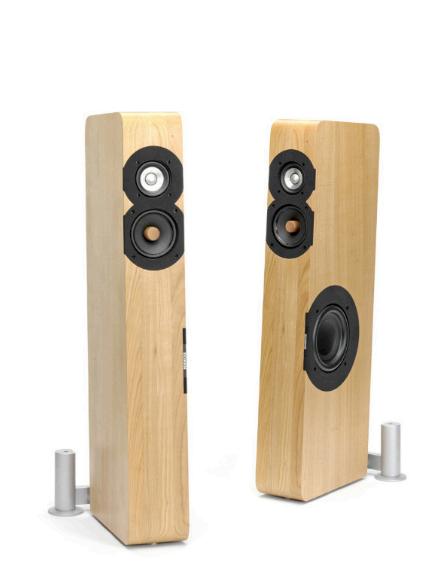
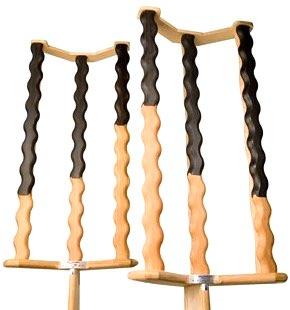
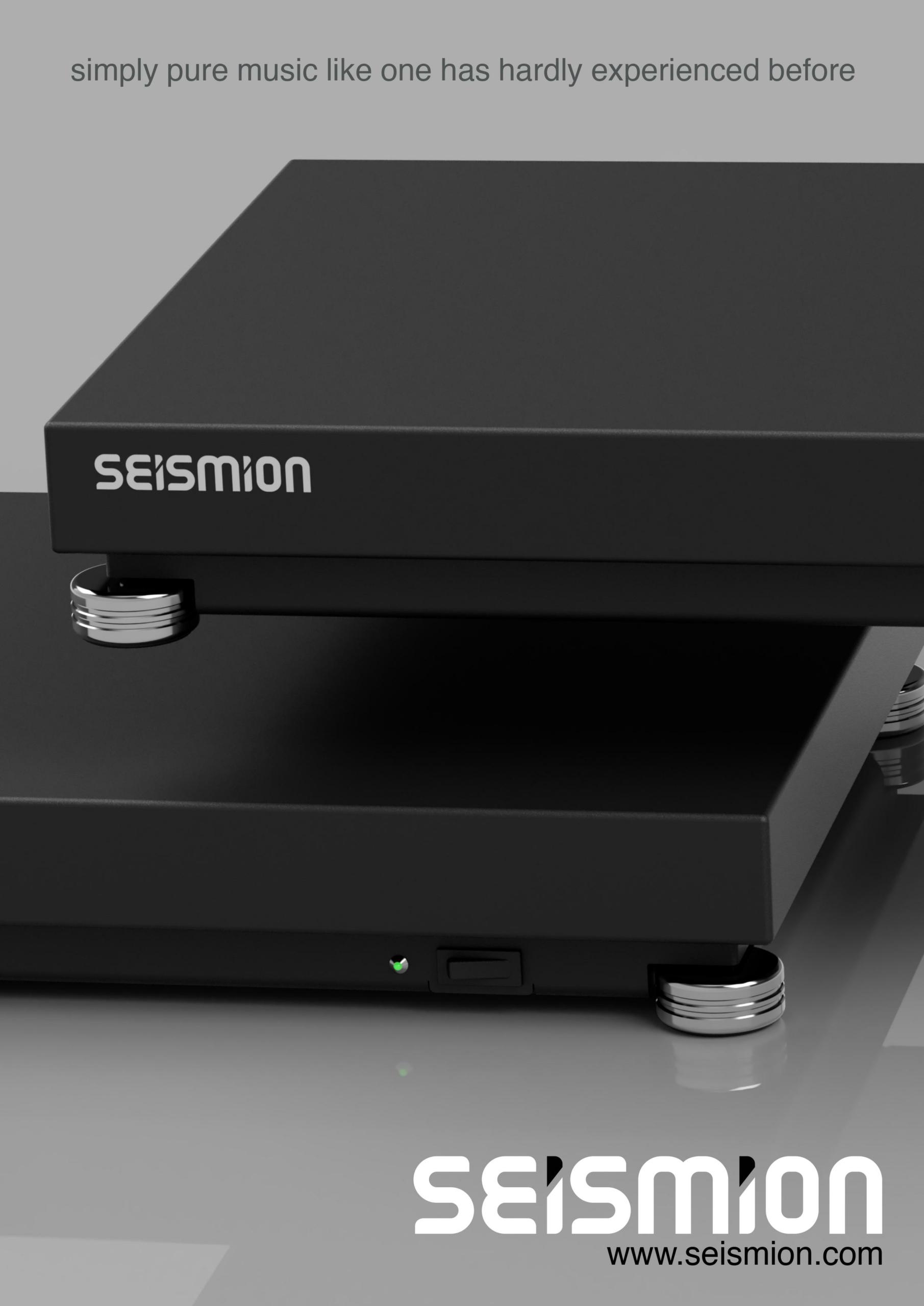


audiokeyreviews.com 3 1 2 5 4
AUDIO
1. SHAKTI HALLOGRAPH SOUNDFIELD OPTIMIZER
2. SOTA COMET TURNTABLE
3. SEISMION AUDIO 54 AMP STAND
4. DJ LADY RYAN - JOAN OF AUDIO & MUSIC
5. BOENICKE W8 SPEAKERS
6. BAETIS REVOLUTION X4 DAC (not pictured)
7. AND other reviews, columns, interviews, videos, etc.
MUSIC
VIDEO REVIEWS

1, 2023 INTERVIEWS
JULY

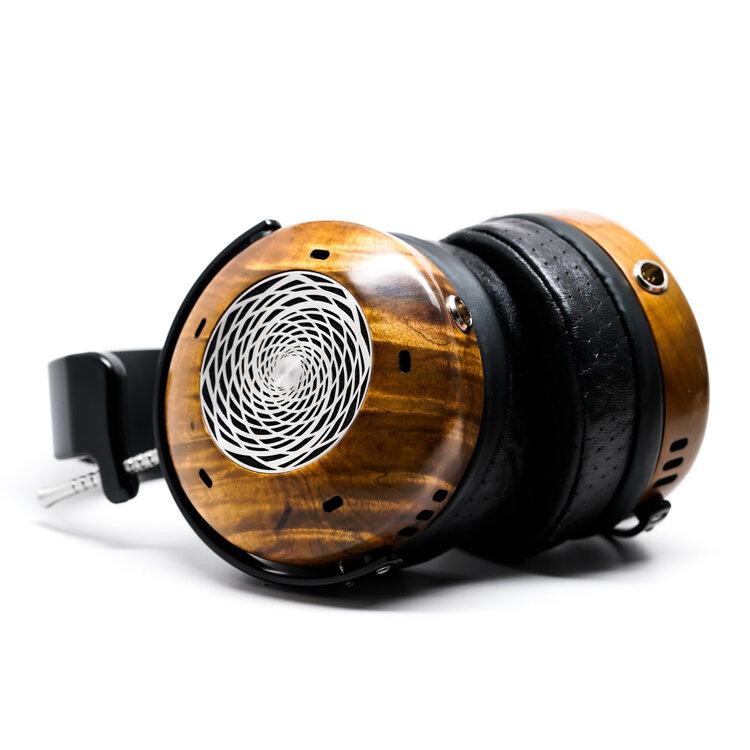

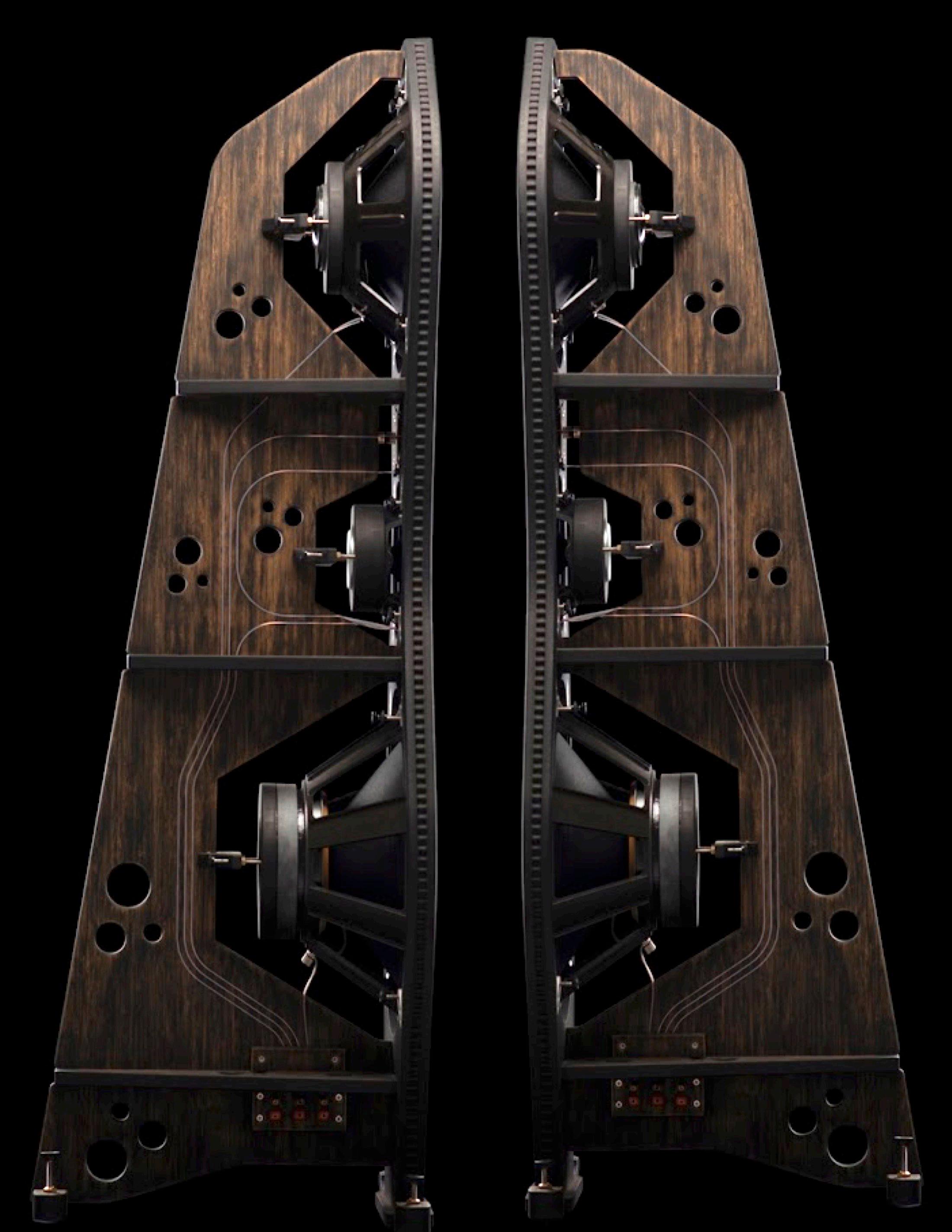



REVIEWS ON OUR WEBSITE audiokeyreviews.com
VERITE
PATROL SE-i DAC
ZMF
BORDER
TRI-ART OPEN 5




 HEADAMP GS-X MINI
AUDIONET WATT INT.
HEADAMP GS-X MINI
AUDIONET WATT INT.
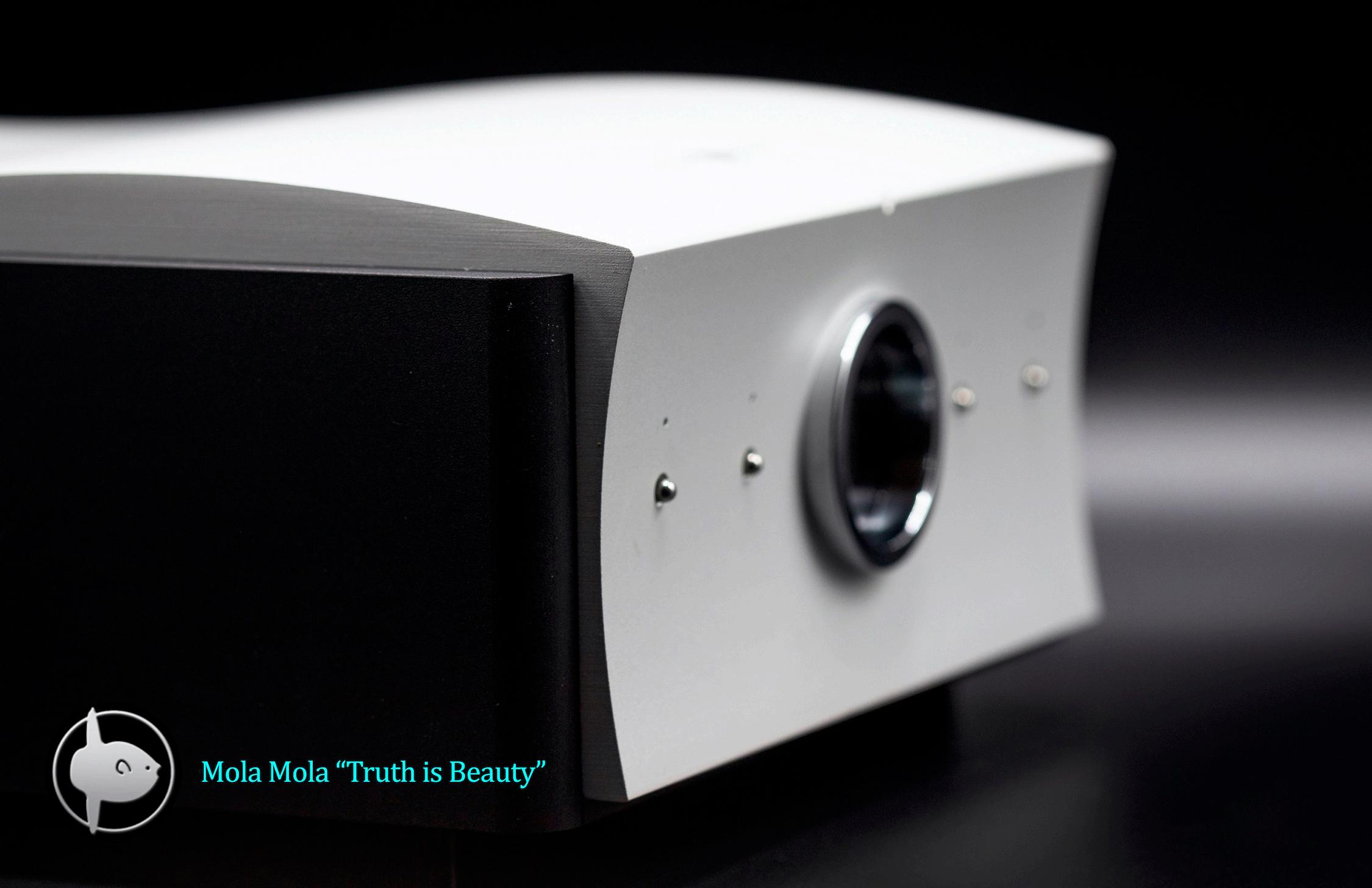


Music is art, art is music.

SPONSORS,WE SALUTE YOU!
ABYSS HEADPHONES
ANTICABLE
AUDIO ART CABLE
AUDIENCE
AUDIONET
AURENDER
AURORASOUND
BDI USA
BOENICKE SPEAKERS
BRICASTI DESIGN
DAN CLARK
DENAFRIPS AUDIO
GESHELLI AUDIO
GRIMM AUDIO
GTT AUDIO HEADAMP
HERMAN MILLER
HIGHEND-ELECTRONICS
LYRIC AUDIO
MADLY AUDACIOUS CONCEPTS
MEZE AUDIO
MOJO AUDIO
MOLA MOLA
MYTEK
PARASOUND
PURE AUDIO PROJECT
RSX TECHNOLOGIES
SILENT ANGEL
SONIC ARTISTRY
THE VOICE THAT IS
TORUS POWER
TRI-ART AUDIO
VIVA AUDIO
WARWICK ACOUSTIC
ZMF HEADPHONES

audiokeyreviews.com

audiokeyreviews.com
Thank You



The Last Platform You’ll Ever Need




E LECTRIFIED S TABILIZATION P LATFORM






































 HermanMiller
HermanMiller



 Wayne Thiebaud-Green River Lands
Wayne Thiebaud-Green River Lands




 Wayne Thiebaud - Winding River
Wayne Thiebaud - Winding River
 Camille Claudel - Self Portrait 1884
Camille Claudel - Self Portrait 1884



 By K.E. Heartsong
By K.E. Heartsong




 Edgar Degas - Ballerina
Edgar Degas - Ballerina











 By Irina Kuzminsky
By Irina Kuzminsky

 Georgia O'Keeffe
Georgia O'Keeffe



 Paul Cézanne - Country House by a River
Paul Cézanne - Country House by a River


 Andre Durain - Bateaux à Collioure
Andre Durain - Bateaux à Collioure

 By Rain Jordan
By Rain Jordan

 Edgar Degas - Dancer, 1878
Edgar Degas - Dancer, 1878











 Henri Matisse - The Open Window, 1918
Henri Matisse - The Open Window, 1918

























 By Andre Marc
By Andre Marc

 Paul Cezanne - Still Live with Apples,
Paul Cezanne - Still Live with Apples,



 Paul Gauguin - Still Life 1848-1903
Paul Gauguin - Still Life 1848-1903






 By K. E. Heartsong
By K. E. Heartsong


 August Renoir - Portrait of Jeanne Samary, 1877
August Renoir - Portrait of Jeanne Samary, 1877









 Vincent Vang Gogh - The Yellow House
Vincent Vang Gogh - The Yellow House



 By K. E. Heartsong
By K. E. Heartsong




 Vincent Van Gogh - Chair with Pipe
Vincent Van Gogh - Chair with Pipe








 Vincent Van Gogh - Fishing Boats on the Beach at Saintes-Maries
Vincent Van Gogh - Fishing Boats on the Beach at Saintes-Maries






 Wayne Thiebaud - Betty Jean and Book
Wayne Thiebaud - Betty Jean and Book




 Rene Magritte - L’homme au chapeau melon
Rene Magritte - L’homme au chapeau melon


 By Oliver Masciarotte
By Oliver Masciarotte



 Paul Cezanne - The House of Dr. Gachet in Auvers sur Oise
Paul Cezanne - The House of Dr. Gachet in Auvers sur Oise







 Paul Cezanne -Ginger Jar and Fruit, 1895
Paul Cezanne -Ginger Jar and Fruit, 1895
















 Vincent Van Gogh -The Mulberry Tree in Autumn, 1889
Vincent Van Gogh -The Mulberry Tree in Autumn, 1889















 Wassily Kandinsky - View of Murnau, 1903
Wassily Kandinsky - View of Murnau, 1903













